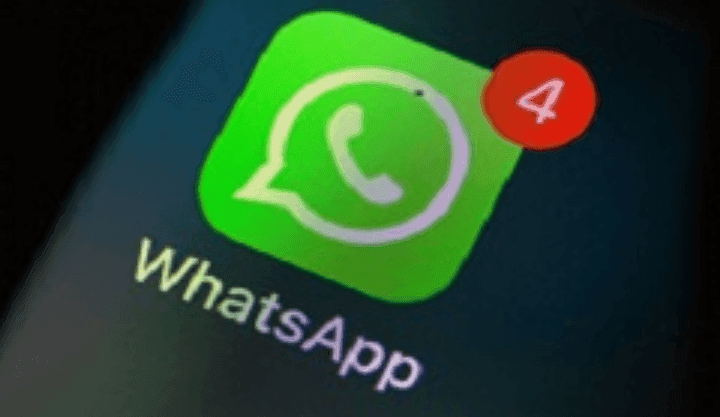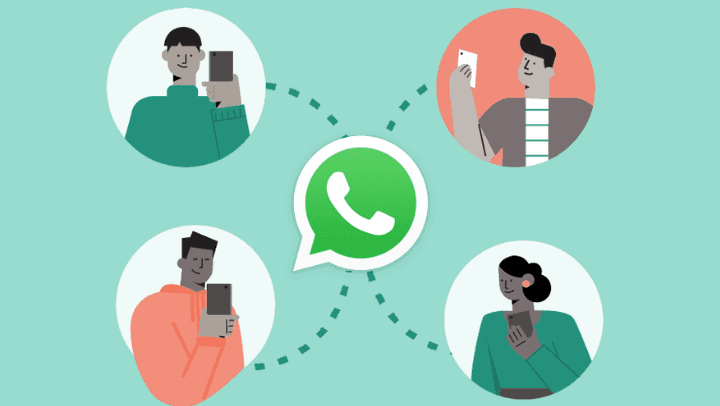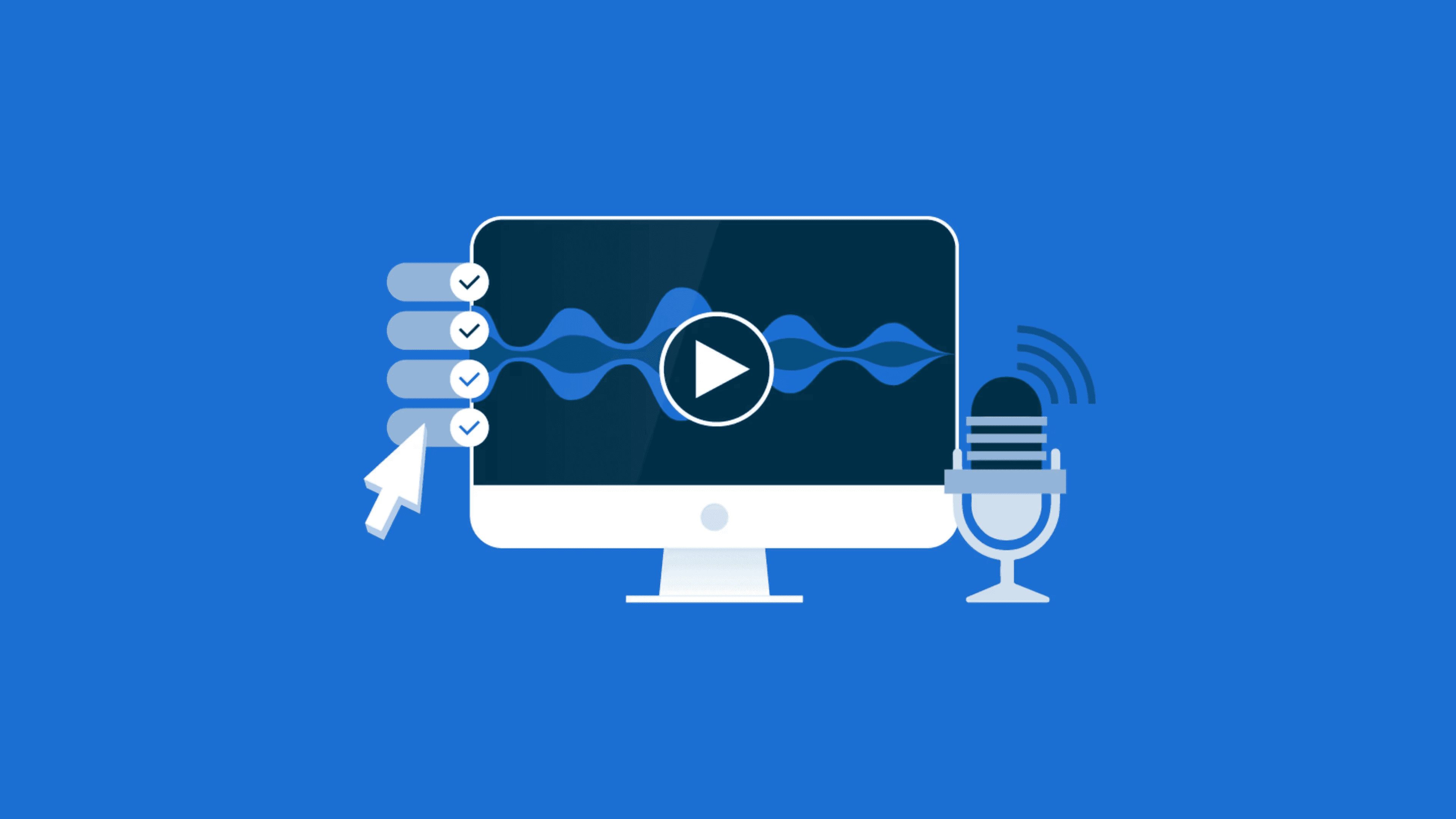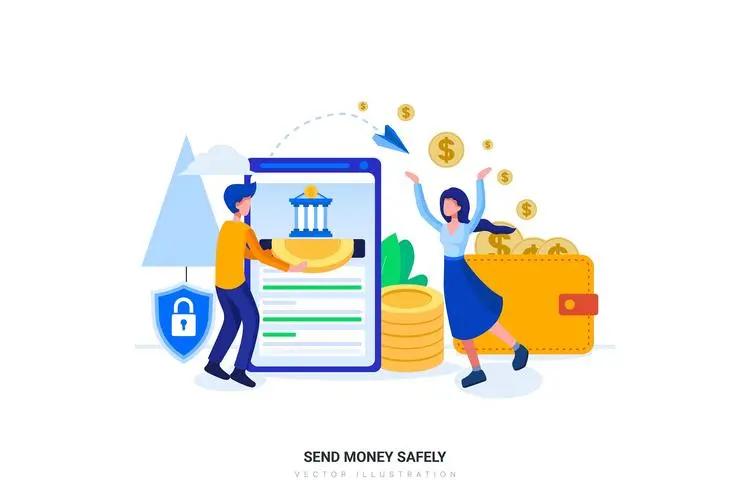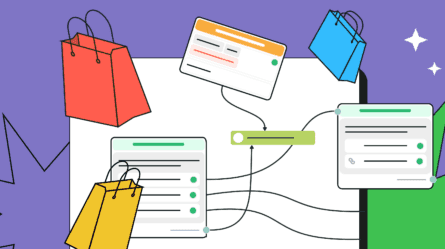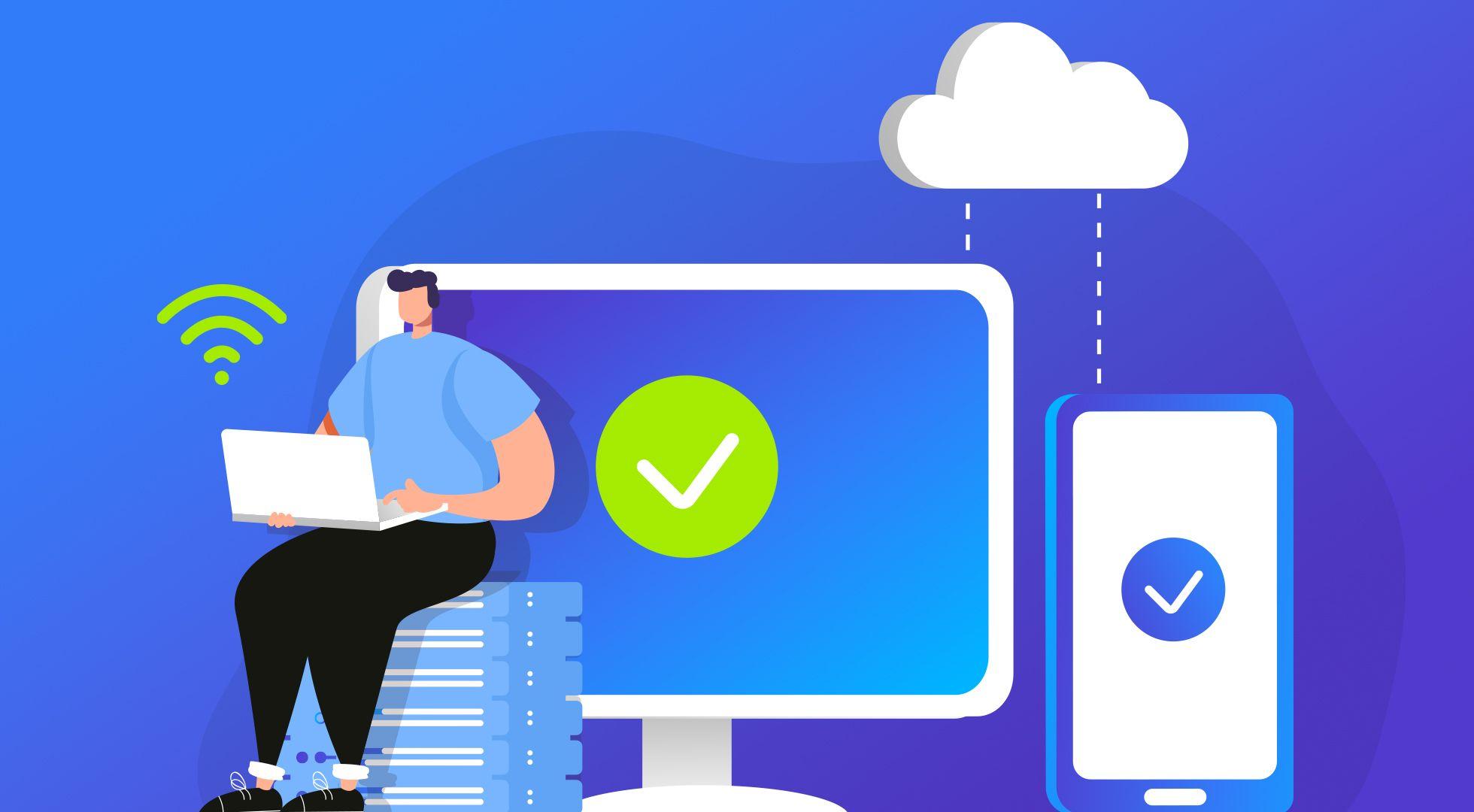应用程序

ROI
Return on Investment (ROI) is a marketing metric used to assess the profitability of a specific investment. This indicator helps calculate the gain from an investment based on incurred costs. By estimating ROI, you can adjust your strategy and improve your business's efficiency.
This article will explain why ROI is important and how to calculate it in digital marketing. We’ll also provide details of ROI analysis and tips for increasing your business's return on investment.
Why is ROI important to your business?
ROI is essential for your business because it helps evaluate the performance of your company and the revenue it brings. The metric assesses the efficiency of an investment by measuring its financial return relative to the expenses made. As a result, company owners can identify which investments bring returns and which don’t. There are even more reasons to consider calculating return on investment.
ROI enables all business teams to make well-thought-out decisions. Companies can effectively decide how to allocate their resources. They can focus on projects that bring the highest returns and avoid unsuccessful investments. Business owners can also compare their ROI with industry benchmarks and find out whether their companies perform well among competitors.
ROI calculations help make the right decisions regarding financial planning and budgeting. When estimating the return on investment, businesses can determine high-revenue investments and allocate more financial resources to projects that bring real value to their companies.
Besides, the metric allows company owners to align investment with the main objectives, optimize market positioning, identify risks before they become real problems, and focus on innovative projects. This results in more investors eager to become part of a project.
There are various reasons why businesses calculate ROI, and we’ve covered the main ones for you to consider. To figure out how good your return on investment is, you need to have a clear understanding of it. We’ll uncover it in the next section.
What is a good ROI?
ROI varies depending on the industry. We’ll unveil the most popular areas to consider and pay close attention to.
Generally, a good return on investment is to generate a minimum of one dollar for every dollar a company spends during a marketing campaign. However, it differs based on numerous factors, including industry, communication channels, and marketing strategies. A positive ROI is usually a good ROI when talking about all industries. However, a strong ROI should be around 10% or more to show that a business makes good gains from its investments.
Let’s also review the return on investment associated with different industries. According to CSIMarket's research, companies involved in services usually get an ROI of 10.31%. Those in the technology sector often have a return on investment of 5.56%, while companies in the transportation sector have a slightly higher ROI of 6.40%. Businesses in utilities receive a return on investment that fluctuates around 4.71 %. For those companies related to healthcare, it’s good to have a return on investment of 3.42%, while finance businesses will have around 0.73 %.
Now that you know the ROI, which is considered good based on their sector, it’s time to find out what the highest ROI companies achieve through effective resource allocation and strong sales.
What is the highest ROI?
Besides finding out what a good ROI is, you should also know how high your returns need to be to outperform competitors and see real results from your business. We’ll uncover some of the highest ROI you can have after investing in various industries.
The first is real estate, which can provide a 10% ROI or even higher if you do everything effectively. When investing in such a business, you can avoid inflation and have a constant cash flow. Buying property and renting it to people can be highly profitable and give you high returns.
Lawyers, dentists, accountants, and employment service companies are some other sectors that bring the highest returns. Healthcare businesses, food services, and advertising firms are also on the list of top investments that bring the best returns.
Now that you know what industries are the best for making investments, it’s time to figure out how you can calculate ROI in digital marketing for your business.
How to calculate ROI in digital marketing?
Estimating return on investment in digital marketing is an essential and time-consuming process for every business. To do it right, you need to follow our step-by-step guide, which you can find below.
You can estimate your ROI using the following formula:
ROI = (Net Profit / Investment) x 100
To calculate the measure, you need to identify the following indicators:
Net Profit is the total return from the investment with initial costs substituted;
Investment is the total amount of money you invest.
To estimate the net profit, you can use the following formula:
Net Profit = Total Revenue −Total Expenses
To clearly understand how to calculate ROI in digital marketing, you should see how to apply formulas in real life with numbers, so let’s check the examples below.
Imagine that you want to estimate ROI for your new email campaign. For example, you have a skincare company, and you invested in this campaign $500, and after a year, you managed to get $800. The net profit using these numbers will be $300. It’s time to calculate ROI for this scenario:
ROI = ($300 / $500) x 100 = 60%
Your ROI would be 60%.
Let’s say your company has launched a new product, but your landing page and social media networks don’t generate many sign-ups and conversions. So, you decide to run a video ad using YouTube. Suppose you spent $800 on ad development and YouTube advertising. In six months, you earn $1200, and your net profit is $400. Let’s find out how good your ROI is.
ROI = ($400 / $800) x 100 = 50%.
In this scenario, your ROI would be 50%.
You need to do an ROI analysis to make all the calculations and interpret the results correctly. In the next section, we’ll learn what ROI analysis is and how to implement it accurately to get proper results.
ROI Analysis
Besides estimating ROI, you should also know what ROI analysis is and how to do it. This section will explain this and more.
ROI analysis is the process of evaluating the efficiency or profitability of a specific investment. After conducting a return on investment analysis, companies determine the financial returns generated from a specific investment. It can be used in various areas and for different business purposes. Business owners usually use it to assess the effectiveness and profitability of online ads, social media campaigns, email marketing, SEO, traditional advertising, trade shows, conferences, and promotional events. With ROI analysis, entrepreneurs can evaluate how profitable new product launches and improvements can be.
ROI analysis contributes to the choice of the right operations and efficiency projects. These include investments in automation tools, marketing platforms, new software, and technology to boost productivity. Besides, with its help, companies calculate the effectiveness of employee training programs, recruitment campaigns, and educational initiatives.
Once you decide to implement ROI analysis, there are pros and cons you should consider before doing it. Let’s start with the perks:
straightforward formula;
qualitative assessment of investment;
well-informed decision-making process;
well-thought-out financial planning;
clear investment justification;
performance accountability.
The disadvantages of return of investment calculations include:
focus on immediate returns without long-term opportunities;
static analysis;
non-financial factors excluded;
possibility of misleading results;
might not cover hidden costs.
Now that you know about the pros and cons of ROI analysis, let’s find out how to conduct it step by step.
Determine a clear purpose for the analysis. ROI analysis can serve various objectives, so it’s important to identify specific and accurate goals for your business. For instance, you can calculate it for your new marketing campaign, product launch, technology, or special platform. By estimating the return on investment, you can assess the effectiveness of your investment and the profit it will generate.
Calculate all the financial expenses. Identify all the costs associated with the new implementations. These include upfront expenses like installation fees, initial marketing costs, and training; recurring expenses like operational costs, employees, utilities, and subscription fees; and indirect costs associated with administrative processes.
Assess returns. Forecast the financial gains from your investment. Additionally, non-monetary benefits from the investment should be considered, such as enhanced brand reputation, improved customer satisfaction, and increased employee morale.
Estimate net profit. Use a general net profit formula to calculate the value. You can do it by subtracting total costs from total returns.
Calculate ROI. Apply the formula provided above to estimate the return on investment for your business. Refer to our example to make accurate calculations for your company.
Conduct sensitivity analysis. This step is necessary to understand how factors like sales growth rate and cost of materials influence your ROI. By performing this analysis, you can determine how strong your ROI is when influenced by various conditions.
Interpret results. Find out whether you have a positive or negative ROI and make decisions based on this information. You can explore industry benchmarks to understand your return on investment compared to competitors in the same niche. This data can help you decide if additional investments are needed to stand out and outperform the competition.
Now that you know how to conduct ROI analysis, it’s time to explore some tips on increasing ROI. These tips can be particularly helpful if your estimated ROI is lower than expected.
How to increase ROI?
There are a lot of strategies companies use to improve their ROI, but nobody can guarantee success. That’s why, in this section, we’ve listed the most powerful tips proven to deliver real results.
Identify goals and key metrics. To create an effective marketing strategy that brings good ROI, you need to determine your main business objectives. They should be accurate, measurable, attainable, and timely. By defining key metrics, you can track your progress toward achieving your goals and maximizing ROI. These indicators will also help you identify the tactics needed to boost your ROI.
Improve your advertising campaigns. Low ROI can indicate poor performance in advertising campaigns or overall product promotion. You should monitor your campaigns and metrics, which will help you assess their effectiveness. Once you identify issues, it’s necessary to solve them promptly.
Consider using additional communication channels. When aiming to improve ROI, integrate multiple communication channels into your marketing strategy. Identify channels that effectively convey your message and are popular among your target audience. Your ROI is influenced by the channels and content formats you choose to promote your product effectively.
Leverage A/B testing. Enhancing your marketing campaigns involves testing different variations, which is streamlined through A/B testing. This method allows you to compare two campaign versions—different email subject lines, images, and CTAs — and determine which resonates best with your audience.
Conduct surveys. After customers purchase your products, consider sending them emails asking for feedback. You can create surveys containing questions regarding your brand’s strengths and weaknesses. Also, you should ask clients about the main challenges they had with your company or product. This way, you’ll be able to identify issues that prevent clients from coming back or prospects to buy from you. Knowing your strong sides will help you find out what you do right and move in the right direction.
Use automation. By automating everyday processes, you’ll be able to prevent human error, send personalized campaigns at the right time, and reduce the workload on your team. The platforms enabling you to automate repetitive tasks usually have analytics tools helping you track and assess the success of your campaigns. Services like LIKE.TG have all the necessary features and analytics to run campaigns on various channels, including email, chatbots, web push notifications, pop-ups, and more.
Review your pricing structure. Consider optimizing your pricing based on the value you provide to your customers. When optimizing your pricing strategy, consider factors such as demand, seasonality, and market conditions. You can also implement discounts to attract new clients.
Congrats! Now you know what return on investment is and why it’s essential to track it for every business. We hope that our tips will help you improve your return on investment.

RFM analysis
RFM (recency, frequency, monetary value) analysis is a marketing method used to identify the best clients based on their spending habits. RFM helps predict which customers are likely to repurchase a company’s products and estimate its revenue from regular and new consumers.
In this article, we’lltalk about why you should use RFM analysis, explain how it works, and review how to perform this analysis.
Why should you use RFM analysis?
This marketing tool entails three main quantitative categories: how recently a client bought a product, how often this person makes purchases, and how much money this customer spends. It allows companies to rate their customers and identify those who bring the most value. By conducting the analysis, marketers compare the profit that existing and new customers bring to their businesses.
RFM analysis helps companies manage their advertising budget wisely. It enables marketers to identify consumers with the same values and segment them. Audience segmentation allows brands to create targeted campaigns, tailor their messaging, meet customers’ needs, andenhancecustomer satisfaction and ROI.
The method is critical for marketers since it provides them with an understanding of customer behavior, which influences retention, customer lifetime value, and engagement. After conducting RFM analysis, marketers can identifyclients’ level of satisfaction, interest in promotions, and spending volume.
To conduct the analysis and reap the benefits of this technique, you should know what aspects to pay attention to, which is why we need to figure out how RFM analysis works.
How does RFM analysis work?
The first step of RFM analysisis ranking customers according to the following factors:
Recency. The more recent the purchase, the higher the likelihood of a customer remembering the brand and keeping it in mind for the next transaction. Recent customers are more likely to buy somethingcompared to those who haven’t made anypurchases for months. These facts are essentialfor companies since they help single out more recent customers and encourage them tobuy again soon.
Frequency. Many aspects influence customers’ buying frequency. They includetheproduct type, price point, and restocking necessity. Companies can anticipate the demand, for example, productspurchasedtodaywillrun out, and clients will have to repurchase themsoon. Since it’s a repeatable process, brands can predict the date of the next purchase and direct their marketing efforts to remind customers to visit their stores or websites when consumers run out of products. This way, brands can gain customer loyalty because customers love to be taken care of.
Monetary value. Thisis the amount of money each customer spends with a brand. Companies encourage their consumers to spend more to reach their revenue goals.
Businesses pay attention to these three factors and rate customers from 1 to 5 (5 is the highest score). Marketers calculate clients’ ratings and identify customers with the highest value (the best consumers). Then, they use this data to create personalized advertising campaigns, offers, or promotions to improve ROI.
Now that you know how RFM analysis works, you should explore the stepsrequired to conduct it. Let’s have a closer look at the process itself.
How toConduct RFM Analysis
Different tools can help you perform the analysis. For this purpose, you need to have a CRM system with your customer base. Different platforms can import your customers’ data from CRM, calculate the RFM, and provide you with the results.
You can alsoconsider using a spreadsheet in Excel or Google Sheetsas your RFM analysis tool. To get started, you need to export every client’s purchase history from your CRM database to the spreadsheet.Next, you need to sort your customers based on the three key factors: recency, frequency, and monetary value. Rate every customer, and give them a score from 1 to 5 (5 being the highest score).
Below you can see an example createdwith Google Sheets. The table below containscustomers’ names, last order date, recency, order frequency, and purchase amount that can help score each client. You can also seethe key factors of RFM analysis.
Let’s take one of the customers and rate this person. For example, Richard’s scores are 2,2,3, sohis RFM score will be 2.3.
This data-driven method helps companies segment customers based on their similarities and make strategic decisions on the upcoming campaigns and actions directed toward encouraging these clients to perform more transactions. With its help, brands can increase ROI, improve customer satisfaction and retention, and create personalized campaigns.

RSS-driven campaign
This type of campaignis connected directly to the blog content. RSS campaigns imply that an email is triggered automatically every time a new publication appears in the blog.
RSS, or Rich Site Summary, is a format used to deliver frequently changed web content, such as blog posts or newspaper articles.
The user sets the frequency of RSS campaigns manually. They can be daily, weekly, or monthly. RSS format is convenient for users who like to stay informed but prefer to check their emails for new pieces of information rather than open the blog or newspaper website.
To create an RSS campaign, you need to have a valid RSS URL that can be provided, particularly for this type of campaign. There is a large variety of RSS-generating services on the web, both free and commercial ones.
RSS-driven campaigns are a great way to keep your readers tuned in to the updates on your blog or news website.
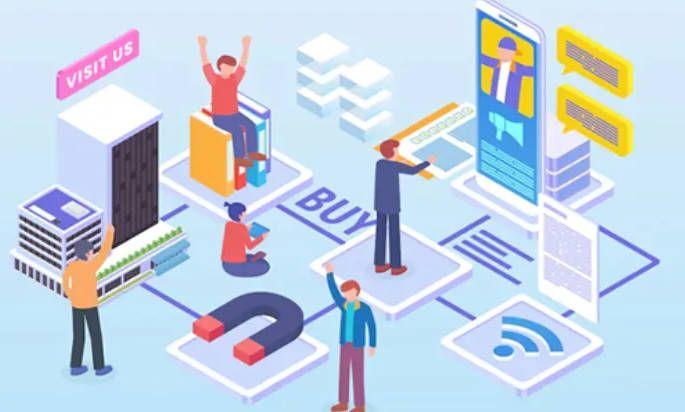
Return on advertising spend
Return on advertising spend (ROAS) is a metric that estimates the revenue received from every dollar a company spends on advertising. It allows companies to assess the effectiveness of advertising campaigns and the income they earn from them.
In this article, we’ll unveil the importance of ROAS and explore its formula. We’ll also uncover 4 ways to increase return on advertising spend.
Why is a return on advertising spend important?
ROAS is one of the essential metrics for businesses that help evaluate the effectiveness of specific ads, advertising campaigns, or platforms. While ROI enables entrepreneurs to estimate the profit they obtain after all expenses, ROAS provides brands with an understanding of the revenue each ad brings. After calculating the return on advertising spend, marketers can identify the performance of each ad or campaign and figure out how profitable they are. Once they find it out, they can take measures and improve their strategy and ads.
Before companies launch advertising campaigns, they need to define the minimum revenue they should obtain from them. This way, marketers can reveal whether they succeed in reaching their main target. Usually, brands hope to receive a minimum of $4 for every dollar they spend on an ad. Yet the majority of businesses still seek to generate bigger revenue. Along with other major metrics, return on advertising spend provides business owners with a clear picture of their companies and the measures they need to improve to attain their revenue goals.
Now that you know the importance, it’s time to explore a formula and calculate ROAS for your business.
How to calculate return on advertising spend?
You can easily estimate a return on advertising spend metric with the formula provided below.
Return on Advertising Spend = Revenue Attributable to Ads / Cost of Ads.
We’ll have an example to make sure that you understand how to use this formula for your business purpose. Let’s say that you have a startup and decide to invest in an advertising campaign. The campaign costs you $300 and brings you $1500. It’s time to calculate ROAS for this situation.
ROAS = $1500 / $300 = $5.
The ratio is 5:1, which indicates that the result of your advertising campaign is great and gives you good revenue. So, for every dollar spent on this campaign, your company gets $5.
There are two ways to estimate your ROAS. Some marketers prefer to calculate the measure based on ad costs, while others find it useful to cover additional advertising expenses. This allows them to have a clear picture of the campaign’s performance and its profitability. Some companies assess both to have accurate indicators.
The formula is clear now, so let’s jump into some tactics to improve your return on advertising spend.
4 ways to increase your return on advertising spend
As a marketer, you want to achieve the best revenue goals and do your best to make it possible. We’ve got some tips for you to generate higher ROAS. So let’s dive in.
Spend less on your advertising campaign. You can boost your return on advertising spend by reducing the ad cost in different ways. Try to change your bidding strategy. You can consider two different methods: manual and automated bidding. If you place an ad in a lower position in search results on Google, you can save your money. Besides, it’s critically important to target the right audience segments. For this purpose, you need to identify your ideal customers, their location, job, age, gender, hobby, etc. When you reach your target audience, you avoid spending money on people who aren’t interested in your product.
Optimize your landing pages. Once users click on your ad, they expect you to provide a seamless experience with your landing page. Before launching campaigns, ensure that your page is relevant and provides users with everything necessary for conversions. LIKE.TG’s landing page builder allows you to create a landing page to your liking. With our drag and drop builder, you can design your perfect landing page within 15 minutes. As a result, customers will have an amazing experience with your brand. Besides, you should take care of your page speed. Check out your load time and find ways to increase it: optimize images, use a CDN, minify CSS and JavaScript, etc. Remember, the faster your landing page loads, the happier your customers and the lower bounce rate.
Ensure you have shopping ads. Since more and more people use mobile devices for shopping, you should consider product listing ads. Optimize them and target your audience segments. Customers will instantly notice your product and buy it if it meets their requirements.
Improve customer lifetime value. Loyal customers are very important for your business since they regularly bring profit. You can boost their customer lifetime value and accordingly increase ROAS. You can do it in several ways: implement upselling, send email campaigns to keep customers updated on new releases, discounts, and special offers, and create loyalty programs to encourage purchases and referrals.
Congrats, now you know how to calculate and increase return on advertising spend. Make use of the techniques above to boost your profits.
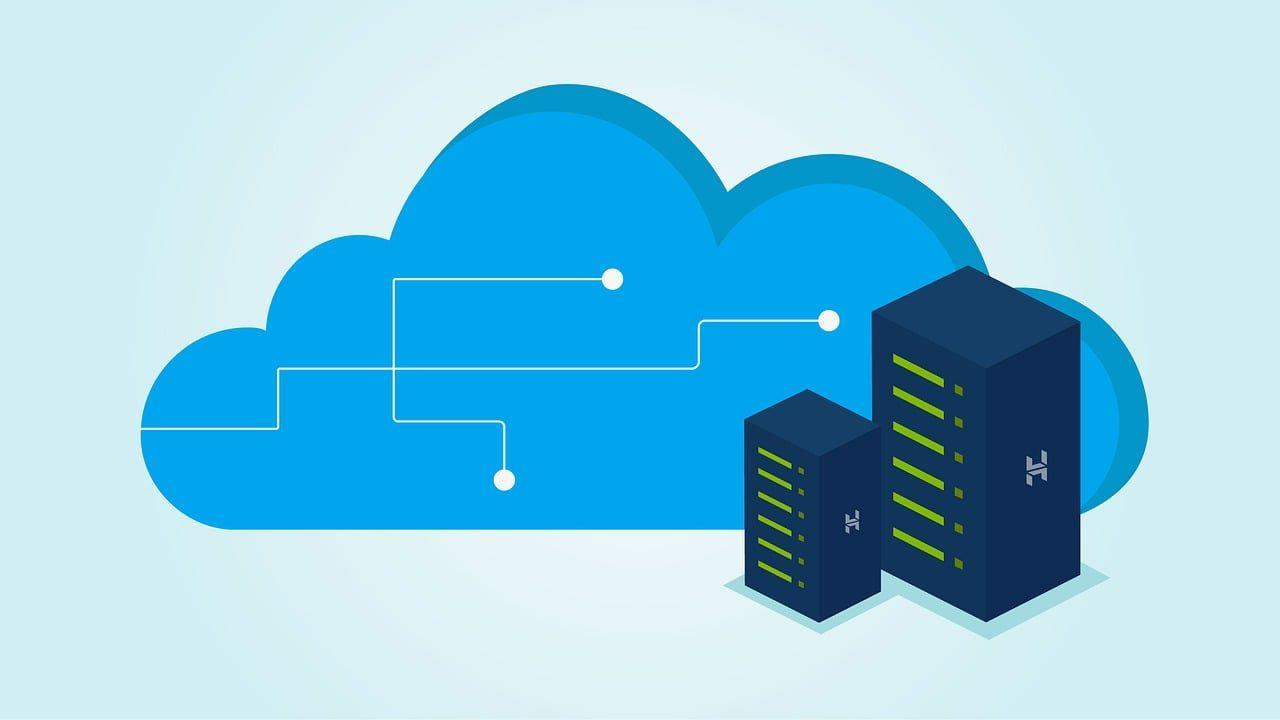
Run rate
A run rate is a metric that uses a company's current financial performance to predict future revenue data. Business owners calculate the metric using existing financial information, assuming that the current performance will continue to create a yearly projection.
In this article, we’ll review the benefits and risks of using the run rate and unveil how to calculate and use the measure.
Benefits and Risks of Using the Run Rate
Newly created companies, various organizations, and established businesses use forecasting formulas like a run rate to predict future financial performance. After estimating the metric, business owners can take well-informed decisions regarding their marketing strategies, expenses, business expansion, etc. Although the run rate can’t guarantee that these predictions will be 100% accurate, they still help company owners make wise decisions regarding their business development. There are even more benefits entrepreneurs can reap after calculating and understanding the run rates of their businesses. The estimations help
make financial performance estimates;
create new profit departments;
effectively make investments and spend money;
evaluate the results of operational changes;
shape budget;
set the best price for the product.
However, besides the advantages, the run rate also carries several risks to business owners. You need to be aware of these limitations before using the metric.
Businesses from seasonal industries can’t rely on the run rate because of the fluctuating revenues of these businesses. They perform better in specific months, while the revenue is low in others. Entrepreneurs can't receive accurate results when calculating peak seasonal revenue data. Moreover, it can’t ensure that the financial performance will be as good as during the peak revenue periods.
The run rate doesn't take into account capacity constraints. A company might work at full capacity when calculating the measure. However, it can’t work the same way all the time. The revenue depends a lot on the customer demand within the market. If the demand reduces, the revenue drops.
The run rate might be irrelevant when combined with future trends. The financial performance of a company depends on changes within the market. For instance, if your product becomes more popular in the future, it might bring you huge income and encourage you to expand. Yet the situation will be different when your competitors prevail within this market.
Now that you understand the pros and drawbacks and still want to calculate the measure, let’s jump into the next section to unveil how to do it.
How to calculate the run rate?
This section is designed to show you the steps for estimating the run rate. Below we'll provide the instructions and an example, so let’s dive in.
Identify the timeframe. The first step requires you to decide for which period you want to estimate the run rate. You can choose between a quarter and a year. After defining the financial period of your company, proceed to the process of gathering information.
Collect relevant revenue data. Once you determine the time frame, you need to find appropriate data about your company's revenue. Your revenue data should correspond to the period you want to predict with the run rate. For example, if you want to predict business revenue for the next quarter, you should find revenue data for the same period in the past. However, you can still calculate the metric using revenue data for a month, but the result will be less accurate.
Multiply the revenue by the chosen period. When you decide on the time frame and find the necessary revenue data, it’s time to calculate the run rate. Multiply your revenue during a specific period by the timeframe you’ve chosen. For instance, if you want to get the annual run rate, you should multiply by twelve.
Now that you have a step-by-step guide, it’s time to find out how to use this knowledge. Let’s discuss one example.
Say, there’s a startup that has been operating for a year. Its owner wants to calculate the run rate to predict future financial incomes and decide whether there’s a point in expanding the market. Let’s imagine that the company managed to make $30,000 per month. Let’s estimate the annual revenue for this business by using the run rate formula.
Annual run rate = $30,000 (revenue per month) x 12 (number of months in a year) = $360,000.
The company's expected annual income will be $360,000 if it operates with the same capacity and in the same marketing situation.
Now that you know how to measure the run rate, it’s time to find out how to use it. The next section will help you apply your knowledge and skills to reach business goals.
How to use the run rate?
New companies and organizations use the run rate to uncover the potential financial performance of a business. They can apply these estimations to make well-informed business decisions related to business expansion, expenses, operational changes, and marketing strategies. The run rate helps entrepreneurs decide whether to make alterations to their company operation, new product releases, or marketing strategy. They can also find out whether it’s the right time for additional investments and expenses.
Some businesses use the calculations to decide whether they need new financial departments. The run rate helps entrepreneurs determine their budget and the best product price.
Congrats, now you know all the essentials about the run rate. Hope that our instructions will help you calculate it.

Retail marketing
Retail marketing is a set of actions that a retail store makes to effectively sell other brands’ products. These activities include purchasing products from other businesses within a specific field, promoting them, and establishing relationships with the audience.
Retail stores can be offline, like Walmart, or online, like Amazon. These two retailers are the most successful players in the retail game. According to Statista, Walmart earned $331 billion in 2019.
To succeed in retail, you need to sell quality products at competitive prices, create appealing and ergonomic packaging, and run engaging sales promotion campaigns to better communicate with your clients.
Let’s find out why retail marketing is important.
3 Reasons That Retail Marketing is Important
Retailers help small manufacturers
Retailers gather data that manufacturers rely on
Retailers can make an ecosystem with manufacturers
Check the three main reasons that make the retail industry an integral part of today’s economy:
Retailers help small manufacturers. Successful retail stores can help small family businesses by promoting their products directly to customers. That’s great for both parties since a small business can’t afford massive advertisement campaigns, and only a few people know about this brand. In exchange, the retailer has more unique goods to offer their customers.
Retailers gather data that manufacturers rely on. Retail stores collect data on customer behavior, while manufacturers don’t have direct access to this information. If both parties cooperate, manufacturers can produce better products based on customer feedback, while retailers can increase sales.
Retailers can make an ecosystem with manufacturers. Retail brands vary, based on what they sell, and so do the manufacturers. The manufacturer needs to sell products on the right platform. If you produce bicycles, it’s best to deal with well-known retail bicycle shops, because they can boost your production and sales. Not to mention that a well-known retailer can help your brand overtake competitors that don’t work with them.
Let’s learn about the types of retail marketing.
6 Types of Retail Marketing and Examples
Department stores like Target and Walmart
Franchises like Starbucks and Wendy’s
Supermarkets like Aldi and Whole Foods Market
Malls and shopping centers like Tysons and Aventura Mall
Online retail stores like Amazon and eBay
Discount stores like Dollar Tree
There are six types of retail marketing that include online and offline platforms:
Department stores like Target and Walmart. These are big retail stores that sell different product groups, including food, clothing, electronics, etc. in one place, but in separated and labeled areas.
Franchises like Starbucks and Wendy’s. Franchising allows local retailers to open stores with an established brand name, identity, production process, etc. It allows the franchiser to gain large exposure while store owners will surely make money thanks to the franchiser’s strong brand. /li>
Supermarkets like Aldi and Whole Foods Market. These stores focus on food but they also sell a variety of other household products with a narrower choice compared to department stores.
Malls and shopping centers like Tysons and Aventura Mall. These are large buildings that have several retail stores inside. They are popular because people can find everything they need in one place. Malls are designed to make shopping extremely comfortable, keep people there for as long as possible so that they shop more. That’s why, aside from shopping, people can eat food, watch movies, play VR games, and do all kinds of entertaining stuff.
Online retail stores like Amazon and eBay. Such shops are located on the internet, so people can shop from their homes using a computer or smartphone.
Discount stores like Dollar Tree. These stores are designed for people with lower incomes so that they can afford all the necessary products. Although the quality of the products in discount stores often explains why they are so cheap.
Let’s find out four basic principles that are relevant to any retail business.
4 Principles of Retail Marketing
Product
Price
Place
Promotion
These principles are often called the “4 Ps of retail marketing”: product, price, place, and promotion. Let’s consider each one in detail.
Product
In a nutshell, retailers buy products from manufacturers in bulk, so that they don’t need to open a store and sell directly to customers. The product is the primary factor in the retailing process, so you should build your strategy with a focus on the product.
Here are the four things you need to pay attention to considering the product principle:
Type(s). It should be clear what kind of products you sell, so it’s best to work with specific product types, such as smartphones and related accessories.
Features. If you are a smartphone retailer, you can focus on flagship models or sell affordable, budget phones. This depends on your budget and your target audience’s demands.
Variety. The choice of products may vary from a narrow to a vast range of options. It depends on the same factors: your budget and audience. You can sell smartphones from one brand exclusively, or offer gadgets from different brands. It depends on the size of your shop, its location (online or offline), and how much money you can invest in purchasing, promoting, and selling products.
Packaging. This factor influences the purchasing experience. Make sure your packaging is cohesive with the design of your marketing campaigns and branding. It’s great if you make your packaging ergonomic and environmentally friendly.
Price
Pricing can both attract customers to your retail store and scare them away. Carefully calculate your pricing and bear the following price-forming factors in mind:
Market conditions. You need to analyze the market around particular products, as well as your competitors’ prices to find the right balance, and find out if retailing specific products is worth your while.
Overhead expenses. No matter what you sell, you need to earn money from your business. If you want to sell products at lower prices than your competitors, make sure this strategy brings you revenue despite your overhead expenses.
Product positioning. You need to set the price for your product based on its quality. If you sell an exclusive 100% natural handmade product, limited in quantity, it should cost more than mass-produced analogs. When you market this product, highlight all of these benefits.
Place
Think of where you are going to retail: online or offline. Let’s briefly compare these two options.
Offline. Running a physical retail store requires money for renting and maintaining the location. On the other hand, what’s excellent about a physical retail shop is that it allows you to connect with local audiences face to face.
Online. It’s cheaper to sell your products online, but it doesn’t mean it’s easier. You need to put a lot of effort into making your site convenient to use. Also, you need to make sure your brand is visible online, so you’ll have to invest in SEO (search engine optimization), online advertising, and content marketing to attract new leads.
Sometimes, it’s best to combine both online and offline retail. If you run a physical shop, you can attract people to it with many digital marketing tools. And vice versa, you can advertise offline to encourage users to visit your website.
Promotion
It’s critical to let your target audience know about your shop and products. Here are three more factors that form your success as a retailer:
Advertising. You need to build an effective advertising strategy based on your placement, budget, and target audience needs. If your target audience is young, using Instagram ads in stories is a great idea. In contrast, older audiences are more likely to engage with ads on Facebook. You can also effectively advertise offline in many ways, including live demos, print ads, direct mail, etc. to boost word of mouth around your store.
Public relations. PR is key to make the right impression of your brand. Loyalty programs, participation in local events, sponsorships, and charity drives are a few ways to build an image of a brand that takes an active part in the life of the community.
Sales promotion. This is a great tool for driving traffic to your website or physical shop. Sales promotions incentivize people to make a purchase by offering discounts, freebies, giveaways, and sales programs. These methods are commonly used to increase sales and gain more control over the selling process in general.
Good promotions combine all of these factors. Let’s move on and outline a basic, universal strategy for retail stores.
Retail Marketing Strategy
Use email marketing
Run Shopping campaigns with Google Ads
Use social media advertising
Send SMS campaigns
Use push notifications
Here are some practical tips that will help your retail store prosper.
Use email marketing
Email marketing allows you to create smart marketing campaigns to encourage people to learn more about your brand and, eventually, to buy from your shop. Aside from lead nurturing, emails help businesses keep their audience up to date, engaged, and entertained. By consistently sending email campaigns, you can build loyal relationships with users and turn one-time shoppers into brand advocates.
LIKE.TG allows you to send all kinds of emails, including automated onboarding, lead nurturing, order confirmation emails, and more, to support your customers at every stage of their buyer journey.
It takes little time and skill to create a flow of automated emails with LIKE.TG. Here are the five steps you need to take:
Register with LIKE.TG;
Create an event that triggers email sending;
Create email templates (you can do it in three ways with LIKE.TG for free);
Combine these emails in a sequence;
Launch your automation.
As a result, you will have a series of emails that LIKE.TG will send once the event is triggered (registration, purchase, subscription, etc.). It will look similar to this abandoned cart email sequence below.
Here’s a detailed guide on how to create and send automated emails with LIKE.TG.
Run Shopping campaigns with Google Ads
This type of ad is targeted at users that are looking for specific products. Since they are at the decision stage and almost ready to buy, it’s best to have your shop in that shopping block above other SERP ads and organic results.
Here’s a screenshot of the results for the query “Nike Jordans.” In the Shopping ad, you can see the product image, item name, the price, the shop name, and a value proposition — an additional incentive to click through the ad.
The pricing for this ad type depends mainly on the competition for particular search queries. You can make your bid based on cost per click or cost per 1,000 impressions.
Learn more about these types of ads here.
Use social media advertising
Facebook advertising allows you to target your ads very specifically based on user age, behavior, and interests, as well as use their precise location. Thanks to cheap pricing and a range of targeting options, advertising on Facebook can help your retail store reach different goals.
Firstly, you can increase your brand awareness by letting people know about your Facebook page. Secondly, you can encourage people to visit your website or store. And lastly, what’s crucial for running a business on a local scale, you can attract new leads to your brand based on their location.
Here are six steps you need to make to create your Facebook ad (spoiler: it’s simple.)
Navigate to your Ads Center.
Choose an objective.
Create an ad.
Define your audience.
Define the duration and budget.
Choose your payment currency.
You can learn more about Facebook advertising here. Using similar tools, you can create ads on Instagram, both in the News Feed and Stories.
Send SMS campaigns
This great tool will help your business reach a local audience. You can invite customers to your shop by offering attractive time-limited offers. Due to the emotional nature of shopping, some of your audience is likely to be hooked and purchase goods at your retail store.
LIKE.TG allows you to send promotions and transactional messages at affordable prices to add more channels for communication with your audience and make their shopping with your brand smooth and convenient.
Here’s an SMS that promotes new offers in a local Football Club’s fan store. It attracts people with the help of a lottery and aims to increase sales.
Use push notifications
A push notification is a short message that appears on users’ computers or mobile phones to keep them informed about new products and events in your shop. At a low price, you can notify thousands of users of sales and discounts at your retail store. Check out the web push notification below.
LIKE.TG also allows you to create these web push notifications in a flash. Follow these four steps:
Register with LIKE.TG;
Connect your website with LIKE.TG;
Collect subscribers to send notifications to;
Create your message and send it.
Here’s a more detailed guide on creating web push notifications.
Congratulations, you’ve learned the basics of retail marketing, so now you are ready to build your own strategy!

Restaurant email marketing
Restaurant email marketing is a strategy that implies using email campaigns to achieve multiple marketing goals: promote a restaurant, attract new customers, interact with clients, and boost the popularity of a business. It can help increase the customer base and strengthen relationships with existing clients. With emails, restaurants can update clients on events, promos, new menus, and many more.
In this article, we’ll uncover why use email marketing for your restaurant and show you how to create an email marketing strategy step by step. We’ll also review the top 10 tips and 5 excellent examples.
Why should you use email marketing for your restaurant?
Email marketing is a helpful marketing approach that enables all businesses to grow and expand. There are many powerful reasons to consider using it for your restaurant and we’ll unveil the most crucial of them in this section. So let’s dive in.
Interaction with clients. With email marketing, you can contact your customers directly and communicate your main message. It can be an update on your restaurant, information about new items on your menu, or an invitation to join a special event. You can personalize your messages and send information about promos, special offers, or discounts.
Trusting relationships with customers. With email campaigns, you can build strong connections with customers. By sending updates on your restaurant, you encourage loyalty and let your restaurant be top of mind. It means that customers will instantly think of your place once they want to have breakfast, lunch, or dinner.
Customer loyalty. You can establish customer loyalty by interacting with your clients regularly. If you share special offers, discounts, and promos with your customers, you encourage them to visit your restaurant. When you value your clients and send them discounts, you can make them stay loyal to your restaurant and come back.
Showcasing new menu items. You can use email campaigns to share seasonal specials, new menu dishes, and chef's recommendations. Creating enticing email campaigns with visuals encourages clients to visit your restaurant as soon as possible.
Updating on special offers and promos. You can use email campaigns to inform about offers, promos, and discounts your restaurant offers. This way, you can direct all the information straight to your clients without hoping they will see your traditional ads on the streets. This is a reliable way for customers to discover some attractive deals.
Events’ promotion. When you have some interesting events, live music, or themed nights, you can send information about them to your clients via email campaigns. This way, you increase the chances of more people visiting your event.
Increased number of online orders. If your restaurant has an online order option, promoting it through email campaigns is useful. It will help you educate clients on this feature and increase the number of orders online. You can do it by sending personalized messages encouraging customers to purchase online.
Cost-effectiveness. When choosing between traditional and email marketing, it’s much more affordable to use email campaigns. This also doesn’t require much effort from your team.
Now that you know the pros of email marketing for your restaurant, let’s check out a guide on creating an email marketing strategy.
How to create an email marketing strategy for your restaurant?
Creating an effective email marketing strategy requires you to follow specific steps. We’ve compiled a detailed guide for you to consider.
1. Choose the right email marketing service
First and foremost, you need to find the right bulk email solution to send your email campaigns and bring your restaurant to the next level. If you don’t have any skills and knowledge related to email marketing platforms, consider selecting a no-code builder. To find the right service, you should look at its usability and interface. You also need to pay attention to the number of emails you can send, segmentation, and personalization.
There are many great services out there, and LIKE.TG is one of them. Moreover, it’s an all-in-one marketing solution that will help promote your restaurant not only with email campaigns but also with chatbots, Automation 360, and CRM.
Drag-and-drop builder from LIKE.TG allows you to use tags to segment your customers based on your subscribers' age, gender, interests, needs, and actions and send email campaigns to people interested in your restaurant. The platform’s personalization feature enables you to address subscribers by name when sending email campaigns.
If you want to follow up with your customers, consider utilizing Automation 360. With its help, you can send welcome emails, bonus offers, or thank-you emails based on user actions. Moreover, you can reach your customers through chatbots, web push notifications, emails, and SMS.
Below is an example of a flow created with Automation 360. All recipients who registered for your restaurant event will see this type of email. The flow will start once a new participant registers for the event and then continue with email address verification. You can set up Automation 360 to send emails notifying participants about the start of the event and its details.
2. Create a content calendar
Map out all email campaigns you want to send to your customers as a follow-up. You’ll need to develop a calendar to standardize the send-out and avoid spamming your clients. Everything should be planned and thought out. This is to make sure that your content is relevant and on time.
Consider planning out your moves in advance so that you can automate the sending and set it up on a specific date and time or do it manually. You should align all restaurant's events, promotions, and seasonal offerings with the right timing. If you succeed in doing it, you’ll be able to build consistency and encourage engagement.
3. Track and analyze the results
Keep an eye on key performance indicators, including open rates, click-through rates, conversion rates, and revenue, to figure out how effective your campaigns are. They will help you find the gaps and search for solutions. You’ll need to change your approach, subject line, or call to action. Bulk email service’s analytics will help you with that. Consider checking it regularly to know when you have issues with your email marketing strategy.
4. Engage with customers after they visit your restaurant
Customers visiting your restaurant for the first time is an excellent opportunity for you to keep up communication with them. Establish interaction with people who can become your loyal customers. Consider sharing your story, informing them about your new dishes on the menu, and updating them on events. It will be another reason for them to visit your place when they wish. Moreover, you should send feedback forms, ask for testimonials, and invite customers to share their suggestions. It will show them you appreciate every guest and the value they bring by providing feedback.
5. Establish transparency and compliance
Your emails should include all the necessary elements, such as privacy policy, unsubscribe option, social proof, testimonials, contact information, timing, and frequency information. These essential email elements will help you establish trust and credibility. When clients subscribe to your newsletter, make sure that they know what they sign up for. You can mention offers, promotions, and events, for example. This way, you provide subscribers with transparency without giving misleading information.
Now that you know how to develop your restaurant email marketing strategy, it’s time to uncover some effective tips that will help you do it successfully.
Top 10 Email Marketing Tips for Your Restaurant
With email marketing, you can achieve your business goals faster, yet you should know how to do it right. That’s why we’ve compiled a list of the 10 most effective tips for your restaurant.
Segment your email list. Consider dividing your customers and prospects into groups based on their characteristics. By segmenting clients according to their preferences, location, or past ordering behavior, you can send them only relevant email campaigns that match their needs. Personalized emails are more likely to convert prospects and resonate with existing clients.
Entice with attractive offers.Offering offers, promos, and discounts is always a good idea. These will help you grab customers’ attention and get them to visit your restaurant when they want it.
Find the right time for sending emails. Conduct tests to figure out when your customers open emails most often. It will help you identify the perfect time for sending email campaigns that will bring you the highest open rates. According to MailChimp, if you want better engagement and open rates, it’s better to send your emails on Sundays when customers have their free time from work. The study says that you can also do it on weekdays like Tuesday, Wednesday, and Thursday and avoid Mondays when clients’ inboxes are flooded with dozens of emails. Time also influences the effectiveness of your email campaigns. It’s better to send email campaigns before lunch or around 2 PM to have higher open rates. At this time, customers can open your emails and consider your restaurant where they are about to have their meals.
Use eye-catching subject lines. The subject line is the first element a customer pays attention to when opening an email, so you need to make customers want to open and read your email. It should cover your restaurant name, customer name, and a CTA. For instance, “Happy birthday, William! Ilys Restaurant has a little gift for you!”
Add mouthwatering images. Make professional images of your food and add them to your emails. Adding mouthwatering images to your restaurant's emails can significantly improve the effectiveness of your efforts. Such images of your dishes evoke a strong emotional response, making your clients more likely to engage with your restaurant. Besides emotional connection, you can showcase your culinary skills and stimulate guests’ appetite, increasing click-through rate.
Avoid sending too many emails. You need to send email campaigns wisely, using a specific schedule. Remember that customers receive dozens of emails daily, so there’s no need to overwhelm them with too much information from your restaurant. Consider creating a schedule and sending emails automatically at the assigned time. This way, you’ll bring value without spamming your clients.
Keep your CTAs simple. You can define the next steps you want clients to take by providing clear and simple call-to-action buttons. Whether you want customers to make reservations or order online, CTA buttons connected to specific links allow customers to take the desired actions.
Remember about mobile-first design. Since more and more people use their smartphones to check email inboxes, ensuring mobile optimization for your email campaigns is a must. You should optimize content and design for phone and tablet screens to provide a smoother user experience.
Provide localized content for various chains. When you have several restaurants in different locations, we recommend you include geo-targeted content in your email campaigns. Consider informing about events only to visitors who live near the venue or the location they prefer to visit. Moreover, you can add localized content visible to segments located near specific venues. When you open new restaurants, send emails informing customers living in the neighborhood.
Use the holiday season to text customers. The holiday season is an excellent occasion for emailing your customers. However, you need to be creative to grab their attention since there will be dozens of emails these days. Consider using information about special events, offers, and promotions to catch customers’ eyes and encourage them to open your emails.
Now that you know the tips, it’s time to review 5 outstanding examples of restaurant email marketing that works. Let’s dive in.
5 Examples of Restaurant Email Marketing
Businesses approach customers through email campaigns and succeed in reaching their key objectives. Here are five examples of restaurant email marketing campaigns that will inspire you.
Blue Apron — Discount
Blue Apron entices customers to make an online order or visit a physical location to try its new meal. The restaurant makes it even more attractive for customers by offering $50 off for first-time meal plan subscribers.
White Dog Cafe — Cocktail Class
White Dog Cafe does a good thing by sharing events with its visitors. The cafe invites guests to order a cocktail-making kit and join a virtual cocktail-making class to cook the dish. The email includes all the necessary elements, like clear CTAs and comprehensive content for customers to complete purchases.
Cracker Barrel — Christmas Bonus Card
Cracker Barrel reaches out to customers with email campaigns containing a bonus card. The American chain of restaurants offers to order Christmas Head and Serve dinner and receive bonuses valued at $5 and $10 depending on the meals customers choose.
Sweetgreen — New Items
Sweetgreen's email has a catchy subject line and attractive elements. It includes tasty images of the restaurants’ dishes and a clear description of the meal’s ingredients.
Jefferson’s — Birthday Gift
Jefferson’s entices customers to visit its restaurants by offering a free dessert on clients’ birthdays. They’ll need to buy meals to claim the offer.
Congrats, now you know what restaurant email marketing is and why it’s essential. Hope that our tips will help you create email campaigns similar to those we demonstrated as excellent emails. Register in LIKE.TG to create free email campaigns and enjoy automation's benefits.

Retargeting
Retargeting is promoting the company’s products to the consumers who have already interacted with your brand but haven’t made a purchase. Usually, people who have already visited your website or left their contact information in your database see such ads.
In the article, we describe the purpose of retargeting, the way it works, and compare it with remarketing. Also, we highlight the types of such promotions and provide examples.
What is the purpose of retargeting?
According to the WDB Agency, 97% of consumers visiting your website for the first time leave forever without buying anything. Retargeting aims to bring people back and lead them through the sales funnel.
Retargeting shows consumers ads about the products relevant to their recently watched ones. Usually, we observe such promotions on social media and external websites. It lets companies raise their sales and increase the effectiveness of marketing campaigns. The main advantages of retargeting are below.
It lets improve people’s brand awareness. Retargeting aims to show promotions to consumers who are already aware of your business. However, it can also raise your brand awareness. Marketing Nutz states that people need to interact with your business 5-7 times to remember it. Using remarketing lets you remind users about your products and drive their attention to your company.
It helps brands convert leads better. Remarketing allows you to persuade more leads in the consideration stage to buy your products. You can reduce the number of abandoned carts by reminding clients about their intentions and providing discounts. Also, retargeting lets you raise revenue by cross-selling and upselling, as you can suggest supporting products and provide more value to consumers. Finally, this advertising model is highly effective because it lets you work with warm prospects and has a higher click-through rate than while working with cold ones.
It lets increase customer lifetime value. Such a way of product promotion helps you remind your clients about your brand and encourage them to make purchases again and again. If you have contacts of the customers in your client list or they have already visited your website, you can drive repeated conversions and suggest new products. Improving LTV is rather cost-effective because the success rate of selling to a regular customer is 60-70%, while the same rate for a new one is 5-20%.
It helps launch new products effectively. Retargeting lets you test the demand for your products before you start selling them officially. People in your client list who have already visited your website and made a purchase are ideal representatives of your buyer personas. They are already aware of your brand, so if you suggest a product they are interested in, they will likely buy it. Analyzing the number of pre-sales orders lets you plan your inventory and optimize the product before the launch to make it more appealing to the target audience.
All these benefits of retargeting motivate many companies to include this type of advertising in their marketing strategy. Continue reading to discover the way such promotion works.
How does retargeting work?
Social Media Today states that it requires 7 touchpoints before prospects react to your call to action. Retargeting helps you remind potential clients about your company, drive engagement and increase the number of conversions. In this section, we describe the two possible advertising models and highlight their peculiarities.
Pixel-based retargeting. This technique is more popular. You should just add an invisible piece of code, called ‘pixel’ or cookie file, to your website, which lets you track its visitors and their actions. Every time people check your website, pixel drops a cookie file to their browsers. When consumers search through other websites, cookies track their actions and analyze them. While the next page is loading, different advertisers bid on the ad placements on it, the auction takes place, and users see advertisements once they open a website. Pixel-based retargeting lets you provide consumers with timely offers.
List-based retargeting. This technique has been gaining popularity over the last few years with the rise of social media. To use it, you should collect the mailing list of your current clients or prospects and upload it to a retargeting campaign platform. The service will identify the users who have emails from the list and show them your advertisements. You can add additional settings to provide more relevant messages to different groups of clients, but generally, this retargeting model is less personalized than the previous one.
Now you understand the two possible techniques of launching retargeting ads. Let’s further discover its difference with remarketing.
Retargeting vs Remarketing
Both retargeting and remarketing focus on re-engaging customers who have already interacted with your brand. It may be difficult for business owners to find out the difference between them. In this section, we compare these two approaches to product promotion and describe their peculiarities.
Retargeting concentrates on displaying ads to consumers who have already interacted with your company but haven’t made a purchase. You can see such advertisements all over the ad network. Usually, retargeting involves pixel placement on your website or using a list of potential clients’ emails to engage them through social media. You can make such ads corresponding to potential clients’ behavior and promote your products when people need them.
Remarketing has the same goal but uses a different tactic. It focuses on email promotion and reaching consumers who have already made a purchase or interacted with your company. Remarketing aims to re-engage them and raise their lifetime value. This approach allows companies to deliver more specific advertising messages and make communication more personalized. However, remarketing is not always timely because it may be difficult to predict customers’ needs without tracking their behavior.
We recommend combining these two approaches to product promotion to make your marketing campaigns more effective. Continue reading to find out retargeting types and the ways to empower your ads.
Types of Retargeting Ads
According to Invesp, retargeted prospects are three times more likely to click on your advertisement than consumers who aren’t aware of your brand. Understanding different retargeting types will let you make your promotions even more effective. Below we highlight the peculiarities of the most widespread ones and provide tips on how to use them.
Cross-channel retargeting lets you display your advertisements through different platforms. It helps provide marketing messages relevant to the customers’ needs and suitable to platforms’ formats. Also, it lets increase the number of touchpoints with consumers, raise their brand awareness, and make them feel that your brand is everywhere. However, you should use cross-channel retargeting wisely not to irritate the audience.
Email retargeting helps you empower your email marketing campaigns and re-engage potential clients throughout the internet. To use this type of product promotion, you need to add a piece of code to the HTML or your email signature. It will let you track the leads who open your mailings and show them your promotions on other platforms.
Search retargeting allows you to show promotions on search engine results and sites all over the ad network. Usually, this type involves using a pixel to track the consumers’ behavior on your web page and display advertisements to them later. Search retargeting lets you show ads that include specific products that potential clients have viewed before. Also, it can catch customers with promotions when they search for the same product they have already seen on your website.
Social media retargeting can use both pixel-based and list-based models to show your ads. The first one lets you promote your goods to consumers who have already visited your website or interacted with the company’s page on social media. The second one allows you to display advertisements to customized audiences. It means that people whose emails you have in your database have connected accounts on social media so that you can reach them there. The most popular platforms that let you use retargeting are Facebook, Instagram, TikTok, and YouTube.
Onsite retargeting doesn’t focus on re-engaging. It aims to keep consumers on your website for a longer time by capturing their attention. The most widespread example of onsite retargeting is pop-up notifications that provide discounts to visitors once they want to leave the web page. Also, you can use banners that suggest similar or additional products on the side or at the bottom of the page to increase conversions and raise the average check by cross-selling and upselling.
Now you know the main types of retargeting and can choose the most appealing ones to your company. In the next section, we describe the examples of retargeting ads to inspire you and provide some ideas for effective product promotion.
Examples of Retargeting Ads
To retarget your potential clients successfully, your ad should be eye-catching, personalized, and timely. Below we provide a few examples of such promotions and explain the way they work.
Dataslayer.ai.
Below there is an advertisement for a digital marketing reporting company. We discovered this promotion on Linkedin as we had opened their website a few days before. This banner ad suggests high-quality data integration and offers free services for Ukrainians. Remarkable that the ad is personalized because we were searching their website from a Ukrainian IP address.
Silk Maison
There is an advertisement from the clothing brand on the screenshot. We discovered it on Facebook after searching for new outfits on their website. The brand offers a discount for their blouse and free shipping over 388$ to encourage us to come back and make a purchase.
Pollfish
Here is one more example of retargeting ads for marketers. We discovered this promotion on YouTube while watching videos about consumer behavior. Our team had opened the Pollfish website many times before so the service tried to re-engage with us. Notice that they use the statistics in their advertisement and state that they ‘can reach 800,000 consumers globally.’ It let the company stand out from the competitors.
Congrats, now you know what retargeting is, its purpose, and the way it works. You understand its difference from remarketing and can use different types of retargeting ads for your brand’s promotion.

Relative price
A relative price is a price of a product or service measured in comparison to the price of another product. It helps companies adjust their production and allocate resources in the right way.
Why is a relative price important?
You can feel the changes in relative price as they cause changes in standard price indexes that indicate how prices change over time. These fluctuations arise when individual prices adjust to the ebb and the flow of products’ supply and demand. Movements in relative price inform about the scarcity of specific products or services.
If a relative price increases, it shows that demand exceeds supply (or that supply lags behind demand), whereas if a relative price decreases, it indicates the opposite. The increasing relative price encourages consumers to save money on expensive products and search for their substitutes, while companies try to bring more products to the market to gain profit.
Relative prices concerning final goods and services help companies decide what to produce with the help of a ratio. This ratio shows how to allocate land, capital, and labor to produce products and services. Knowing about a rise in relative prices allows your company to adjust the production of goods accurately.
Every company and individual needs to be aware of relative prices because of several reasons mentioned above. Now let’s review the difference between absolute and relative prices.
Absolute Price vs. Relative Price
There is one essential thing to understand: absolute and relative prices are necessary when discussing economic decisions. Let’s find out how you can make your choices based on them.
An absolute price is a market price of a product or service. For example, on average, a car costs $40,000, and a house has a price of $600,000. These are the absolute prices of these goods. Yet many decisions aren’t based on this price. The majority of companies consider the relative price.
A relative price is a price of a product or service compared to another. To obtain a relative price, you need a ratio. Let’s imagine that you decided to buy Vintage Narcissus oolong tea as a gift for your friend, costing $3,250 per pound. At the same time, there’s a cheaper alternative to oolong tea called Tieguanyin Tea, costing $1,500 per pound.
The relative price would be $3,250/$1,500, which means you could buy two pounds of Tieguanyin Tea instead of one pound of Vintage Narcissus tea or pay half the price for one pound of tea.
Now that you know the distinctive features of absolute and relative price, it’s the right time to get to know how to calculate a relative price.
How to Calculate a Relative Price
As you already know, relative price is the price of a product compared to another product. It’s expressed as a ratio between the prices of two products or services. To obtain a relative price of a product, divide the price of one product by another. Let’s take coffee, for example. A tall cup of cappuccino costs $5, while one cup of coffee with almond milk costs $10.
$10 / $5 = 2:1
This ratio indicates that instead of buying a cup of coffee for $10, you could buy two tall cups of cappuccino.
Here is a formula to calculate a relative price for the goods you need:
Pr = Px / Py
WherePr is a relative price;Px is the price of a first product;Py is the price of a second product.
Let’s take another example where the two goods will be houses and apartments. For instance, there’s an increase in the price of houses compared to apartment rents, which might indicate that houses are in great demand now. To meet the demand and obtain the highest profit, a developer would withdraw funds from the apartment construction and relocate them to the building of houses. As a result, there will be more houses than apartments.
Let’s imagine that the price of apartments is declining. It might be the outcome of an oversupply of apartment units. As a result, developers would build fewer apartments and consider allocating resources to building houses.
To sum it up, a relative price is crucial as it helps companies allocate resources in the right way and receive the highest revenue. Besides, it allows you to compare the prices and set preferences about specific products.

Relative market share
Relative market share is a metric that helps companies identify their position in the market compared to their leading competitor. The market share of the latter is their benchmark.
In this article, we’ll explain why relative market share matters, unveil the difference between this measure and market share in general, share a formula to calculate it, and offer tips to increase the metric.
Why is relative market share important?
Calculating your relative market share allows you to identify the major players and understand your position in the market. Check out the example below to have a clear picture of this metric.
For example, Company A has a 35% market share in the jewelry industry, which seems rather impressive. It means that other firms occupy 65%. If there are five top brands producing jewelry, they will split the remaining 65% among themselves, and each one will get approximately 10% market share, which makes Company A a leader.
Although, if there are three big companies producing gas boilers, Company A can have a 35% market share, while Company B has 40% and Company C has 25%. In this case, a 35 % market share no longer seems so attractive. Hence, it can make a firm either a leader in this niche or a second-third player in another industry.
You should understand that a high level of competition in such industries as logistics or retail leaves you a much lower relative market share than 35%. Relative market share helps brands predict their total performance in terms of revenue and plan their strategy accordingly.
Now let’s find out the difference between market share and relative market share.
Relative Market Share vs. Absolute Market Share
While relative market share measures the performance of a particular company in terms of the most powerful brand in the market, absolute market share helps businesses monitor their position compared to all their competitors in the niche.
Investors are especially interested in the absolute market share before offering their financial support to any brand. This measure helps them evaluate the situation on the market and predict revenue they can get. Knowing the absolute market share of each competitor provides a clear picture backed up by figures, which helps them make an informed decision.
Now that you know how relative market share affects brand success, it’s time to learnto calculate this measure.
How to Calculate Relative Market Share
You can use two formulas to determine this metric.
Relative market share = 100* firm’s market share/biggest competitor’s market share
Or you can use the formula below:
Relative market share = your firm’s sales/biggest competitor’s sales
Evaluating your relative market share allows you to monitor your success as a market leader. High market share in one industry can make you the biggest player, while the same percent in another niche will make you lag behind. With these figures in mind, you can have a clearer picture of your company’s performance, and hence, make the right decision.
If your relative market share turns out to be low, don’t give up. Follow our tips to improve the situation.
How to Increase Your Market Share
Increase the quality of your product
Improve your promotion strategy
Nurture your leads effectively
Develop a loyalty and referral program
Decrease prices
If you enter the market with a high market share, there are no guarantees of high revenue in a year or two. We strongly recommend that you implement several strategies below into your business to keep pace with your competitors.
Increase the quality of your product. Carry out a thorough analysis of your competitors’ products to find out their weaknesses. It can be poor customer support, problematic refund and exchange issues, no warranty or after-sales service. With this information, you know what improvements you have to make and what your customers need. Finally, you can ask them directly about what they would change to optimize your product.
Improve your promotion strategy. A well-planned advertising campaign will help you boost brand awareness, acquire new prospects, and rocket your sales. Start with free advertising tools such as email marketing. LIKE.TG allows marketers to send 15,000 promotional emails every month for free. IncludeSMS campaigns, web push notifications, retargeting ads, and ads on socials. Choose the channel your potential clients like.
Nurture your leads effectively.Prospects often drop off the sales funnel because they lack information on your product and customer support. Be ready to provide customers with valuable content at each stage of their journey. Consider offering demos, step-by-step guides, your most successful case studies, reviews, and short checklists.
Develop a loyalty and referral program. Loyal clients are the most valuable for each business. They help not only maintain your average revenue but bring in new customers, and they work as word of mouth. Reward such clients with points, discounts, and personalized offers to show that you appreciate them. This way, they won’t switch your brand to your competitor’s one.
Decrease prices. This technique won’t work to your advantage forever. Still, it helps expand your market share and attract new clients. Try offering time-limited discounts such as high-low pricing or everyday low price to create buzz around your brand.
Choose the strategy that will fit your brand best or combine them to keep your market share high.
Congrats, now you know pretty much everything about the concept of relative market share. Monitor this metric regularly and increase it with the help of LIKE.TG promotional tools.

Retailtainment
Retailtainment is the combination of retail and entertainment. It implies different methods and techniques that provide customers with a unique experience without focusing on receiving payments. Brands evoke emotions and senses in customers to drive their interest.
In this article, we’ll unveil the benefits and examples of retailtainment.
Benefits of Retailtainment
Companies having a competitive advantage usually drive more attention and interest from consumers. Brands that want loyal customers and brand recognition should be ready to provide exceptional in-store experiences people will remember and recommend a business to their friends and family.
Retailtainment is a working marketing technique because it makes people recall brands. Recognition and awareness of a specific company and product will rise. Businesses reap many benefits after implementing this approach. They combine retail and entertainment to get
high brand loyalty;
competitive advantage;
customer insights;
word-of-mouth promotion;
the buzz around the brand;
better sales;
customer engagement;
more customers;
higher profits;
information about customer habits and behavior.
People also get more advantages from retailtainment rather than traditional selling techniques. They include:
interaction with a product;
memorable experience;
useful purchases;
emotional connection with a brand;
well-informed purchasing decisions.
Now that you know the pros of retailtainment, it’s time to jump into some examples. They will inspire you to use the strategy for your business.
Examples of Retailtainment
You can find various forms of retailtainment like displays, excellent customer service, classes, demonstrations, and refreshments. Brands do everything possible to ensure ultimate shopping experiences and make their product recognizable. In this section, we’ll review several examples of retailtainment that had great success.
Escentials
Escentials, a brand that sells natural skincare and fragrances, invites visitors to use a complimentary fragrance consultation service. You can ask beauty advisors questions and identify your perfect fragrance with Escentials. Store workers will give you several perfumes to choose one that suits your taste.
Jo Malone
A British multinational cosmetics company, Jo Malone was established in 1990 and is now a popular brand because it implements the right marketing approaches. Jo Malone’s stores invite customers to use their five senses to feel the incredible smell of the brand’s perfumes and candles. The store’s workers employ imaginative designs, textures, and narratives to encourage senses and establish emotional connections. The company invites people to smell their products and choose the right one for their personalities.
The brand does its best to provide customers with the ultimate customer experience. Clients can get a complimentary hand massage with Jo Malone’s products and a relaxing experience. It helps visitors decide on the fragrance they want.
Apple
Although Apple has gained great popularity worldwide, it still strives to ensure an unforgettable shopping experience. The brand has one of the most prominent experiential stores where people can engage with the products directly. The brand replaced a central pay point with skilled roaming retail staff and genius bars to provide a seamless experience to customers. Apple focuses on consumers and strives to give them everything they want. Customers can try the products and make sure that they suit their purpose. After that, clients can shop for a product that meets their requirements and needs.
Barbie
Released in 2023, Barbie is a film actively discussed on social networks. The Barbie team did everything possible to depict the perfect world of Barbie and Ken and raise serious topics in our society. Barbie’s marketing team collaborated with clothing brands and ensured eye-catching installations at cinemas for its viewers. The audience had the opportunity to take photos as a memory of a famous film. Cinemas worldwide included Barbie Dream House areas where fans could take pictures. Playgrounds consisted of slides, ball pools, and dressing rooms in Barbie style. As a result, both adults and children enjoyed the time before, during, and after the movie itself.
SK-II
SK-II, the producer of Japanese facial treatment products uses retailtainment to engage with customers. The brand’s stores are equipped with Magic Ring devices. These devices make skin analysis and help evaluate skin quality and condition. It analyses five things: texture, firmness, radiance, spot control, and wrinkle resilience. Then, the device compares the customer’s skin with the standard skin of women at this age. Based on the results, beauty advisors recommend beauty products.
Congrats, now you know what retailtainment is and why it’s essential. Hope that our examples will help you choose your perfect strategy.

Relationship marketing
Relationship marketing is a type of marketing that focuses on creating long-lasting and profound relationships between a brand and its customers. Opposed to the traditional sales-focused approach, relationship marketing’s main goals are boosting client loyalty and engagement.
Why is relationship marketing important?
In a nutshell, relationship marketing helps businesses gain higher revenue and cut expenditures by keeping clients engaged with a brand. Retaining a customer is 5-25 times cheaper than acquiring a new one.
Relationship marketing ensures a long-lasting, close, and emotional connection between companies and their clients. It helps earn loyal customers, who purchase from a brand repeatedly and recommend it to their friends, family, colleagues, and so on. Apart from increased sales and profits, which is the core of every commercial undertaking, profound business-customer relationships have other advantages.
Benefits of Relationship Marketing
Cheaper customer acquisition
Close deals faster
Longer lifetime value
Stronger brand resilience
New business ideas
Enhanced product value
We’ve discussed why relationship marketing is important for your business’ profitability in general. Now let’s take a closer look at the far-reaching benefits of implementing it into your marketing strategy.
Cheaper Customer Acquisition
With relationship marketing, your goal is to create an army of brand advocates. When customers have a great experience with your business, they are more than happy to recommend your products or services to others. Meanwhile, 84% of people across the world deem recommendations from their friends and family as the most trustworthy source of information.
Referrals from acquaintances influencepurchasing decisions. Yet the most pleasant part of this situation is that you gain additional sales and new clients while spending next to nothing on it. Word of mouth is still the cheapest and one of the most reliable customer acquisition sources.
Close Deals Faster
If your business markets a complex tech-savvy product or service, closing a deal might be a pain in the neck. Closing deals in the B2B sector takes 102 days on average; the mammoth part of this process is not the selling itself, but lead nurturing.
With relationship marketing, you get new leads from referrals, which is the best source. This type of lead not only converts better but also tends to close deals faster – 67% of marketers and 69% of frontline salespeople confirm this.
Longer Lifetime Value
Relationship marketing’s main goal is to keep a client engaged with a brand for as long as possible. So, an increase in customer lifetime value may seem like something not worth mentioning. However, not only do initially loyal customers tend to stand with your company longer; their referrals do too. Roughly 60% of B2B marketers and frontline salespeople say that referrals have higher lifetime value. The LTV of a referral customer is 16% higher.
Stronger Brand Resilience
Relationship marketing leads to customer loyaltygrowth, which is a critical ingredient for strengthening your brand. Companies benefit from this process in multiple ways. Strong brands have more robust edges in the market, they introduce new products more easily, they attract the best employees, and so on.
Moreover, the cost of a single mistake is not as high when your brand is strong enough. Customers tend to forgive companies they are emotionally connected to – only 17% of clients would dump a beloved brand after a single blunder. Meanwhile, in the case of a negative first experience, 39% of customers would not return to a company in the next two years.
New Business Ideas
Relationship marketing implies constant tight-knit interactions between businesses and clients. As a result, you get more and more awareness about what your customers want, and how you can change your product to get more clientele.
Learning from your customers also helps you avoid unnecessary risks when rolling out new products. If you know your customers’ preferences you can implement only effective and sought-after changes to your brand and product.
Enhanced Product Value
Rephrasing a famous expression, the customer experience is king. 86% of buyers are ready to pay more for a great experience. This means that while others have to dump prices to obtain customers, you can sell dear and still gain more. If you’re providing your customers with great experience, of course.
The points we’ve just nailed down seem so appealing. You’re probably looking forward to building a strong connection with your customers. Do not rush – let’s discover types of relationship marketing first.
5 Types of Relationship Marketing
Basic marketing
Reactive marketing
Accountable marketing
Proactive marketing
Partnership marketing
Types, or levels, of relationship marketing, may be hierarchical stages of building contact with clients. At the same time, each type can be an independent form of brand-to-customer interactions. Here are the five levels of relationship marketing:
Basic marketing. This type is associated with a traditional approach to marketing. Precisely, the goal here is to entice a potential customer and drive them down the sales funnel towards making a purchase. Basic marketing does not imply profound communication between a company and its clients.
Reactive marketing. This level of relationship marketing encompasses after-purchase interaction. A brand reaches its customers to ask for feedback, comments, suggestions, and so on. For instance, a brand can send a feedback request email.
Accountable marketing. Accountable marketing entails deeper interaction between a business and a client. On this level, the business reaches customers to remind them about their purchase and explain why their feedback is important. Another scenario is when a company replies to the feedback they got in the previous level.
Proactive marketing. Here, businesses continue to deepen their contact with customers. They not only communicate with clients regularly but also improve their products and services according to what they’ve learned from their customers.
Partnership marketing. This type of relationship marketing implies the strongest connection between a business and its client. Here, a company can bring in a third party to serve a specific customer need. Another way to do this is to involve the customer themselves in product development and improvement.
Each company can go to the deepest level of communication with a client or stop at the stage that resonates with its business needs the most. Whatever you choose, apply the right strategies to achieve success with your relationship marketing.
Relationship Marketing Strategies
Revise your communication channels
Engage customers through email marketing
Apply ERP CRM solutions
Prioritize customer service
Reward loyal customers
Building relationships is a long and labor-intensive process, which may result in increased ROI, a strong brand image, and happy customers. On the contrary, it may come out dead in the water and ruin the time and money you’ve invested in making connections with your customers. We’ve picked five strategies for you to leverage when working on your relationship marketing goals.
Revise Your Communication Channels
Most companies are only presented online through their websites, and not all of these sites work well. To engage your customers with your web page, make sure it is easy to navigate and provides all the essential information about your business. Add a live chat for swift connection with your support team and phone numbers to contact you even quicker. LIKE.TG lets you create and add a live chat to your website for free without any skills.
More than 50% of traffic at the beginning of 2020 came from mobile devices. Thus, consider optimizing your website for mobile. Make buttons convenient to click, add vertical scrolling, and optimize your content for fast loading.
Apart from changing your website, think about adding new communication channels. The golden rule of good customer-brand relationships is to present your business where your clients prefer to spend time. Conduct research to spot the social networks and messengers your customers use and be there for them.
Provide the possibility to interact with your brand through various channels even when you ask potential customers to subscribe. Multichannel forms will help you leverage this task; they allow a user to decide where they want to receive your messages. To create your multichannel forms for email, Facebook, Telegram, and other subscription options register with LIKE.TG.
Engage Customers through Email Marketing
To keep your customers engaged with your brand for the long haul, implement email marketing into your strategy. Although this marketing channel may seem a bit old-school amidst multiple social networks and messengers, it still brings in great results.
Email campaigns allow you to reach customers consistently and provide them with a more personalized experience. The latter is the key to the most finicky customers’ hearts and purses – 72% of consumers only engage with personalized messages.
Try to be mindful when building your email marketing strategy for customer retention. Send carefully crafted emails at the proper frequency, otherwise, you’ll get outraged clients instead of loyal ones. Remember that long-lasting relationships require communication, care, and sincerity rather than hard selling. Thus, try to avoid only sending special offers; to make your email marketing more diverse, follow our compilation of different types of emails with examples.
Apply ERP CRM Solutions
Doing relationship marketing without accurate and precise information about your customers is all smoke and mirrors. To create a seamless experience for your clients apply modern technologies, namely, customer relationship management (CRM) and enterprise resource management (ERP) solutions.
CRM software allows you to collect data about your customers, track the history of their interactions with your brand, pinpoint service issues they have faced, and so on. With this information on hand, you get more opportunities to delight customers and keep them engaged. Businesses that already have taken advantage of CRM noticed a 47% improvement in customer retention and satisfaction.
ERP solutions focus on your company’s processes, help you automate them, and maintain your business more effectively. 95% of companies that implemented ERP, noticed improved efficiency in their business processes.
CRM and ERP can decrease your overhead costs, boost sales, and take your relationship marketing to the next level. Thus, consider applying ERP solutions from Microsoft, SAP, Oracle, IBM, Peoplesoft, or others to your marketing strategy. As for CRMs, you don’t only have to choose market leaders, such as Salesforce, check our list of Free CRM software.
Prioritize Customer Service
When it comes to building strong long-lasting relationships with clients, excellent customer service is the name of the game. 96% of consumers say great service is crucial for their loyalty to a brand.
Cutting corners with customer service may have painful results for your business. At the same time, friendly and helpful service representatives are not enough; you need to be proactive in your aspiration to help. To leverage proactivity, determine common issues your business faces, and create a plan for how to deal with them. This will help your company’s representatives react instantly when the problem occurs.
Speaking about the urgency of reaction, your clients expect to get a response from a brand within an hour of their query. Consider adding a chatbot for your customer service. It will not only help your customers get a quick answer in case of an emergency but also cut your customer support costs by 30%.
To benefit from using a chatbot, sign up with LIKE.TG – with our platform you can build a bot for Facebook and Telegram for free. Send up to 10,000 messages a month, set up autoreply flows, get detailed statistics on interactions with your bot, and more.
Reward Loyal Customers
Humans have a neural structure called the reward system, which reinforces certain behavior patterns. As a result, we tend to recreate actions that led to some valuable rewards. It’s a basic psychological trait you can use in your relationship marketing – simply reward your clients’ loyalty.
Although the market seems oversaturated with various loyalty programs, they actually work. 79% of consumers continue doing business with brands because of their loyalty programs. Nevertheless, people are active in nothing short of half of the programs they belong to. To create a program that works, stick to several rules:
Do not limit your loyalty program with discounts only – offer sneak peeks of upcoming products, special events, gifts, and so on.
Use gamification – show your customers their progress with your service, give redeemable points, create challenges.
Partner with other businesses – this move will help make your awards more diverse and engage people with various interests.
We’ve unveiled several relationship marketing strategies your company can use. Now let's see how exactly brands use some of them to keep their customers engaged.
Relationship Marketing Examples
We’ve picked three examples of brands using strategies from the list above. Consider adopting some of the best practices or their elements.
Chatbots for Consistent Interaction
Chatbots are a great tool for handling customers’ issues and providing them with prompt assistance. However, chatbots' scope of application does not limit itself with support only. Bots on various platforms can be used for keeping customers consistently engaged with a brand.
The meal kit delivery service HelloFresh implemented a Facebook chatbot to constantly keep in touch with its clients. This little buddy helps users solve frequently occurring issues, answers common questions, set regular reminders to order delivery, notifies them about new blog posts and other updates, searches for interesting topics, and more. HelloFresh even uses an element of gamification – you can take an entertaining quiz about breakfast.
Gamification in Email Marketing
The writing service Grammarly uses good old email marketing to keep its users engaged. Apart from common emails with tips and special offers, the company adds gamification into their email marketing strategy by sending weekly progress reports to users.
The email starts with awarding you a flattering yet witty status – Hercules in the example below. Furthermore, you can track your writing statistics. To play on your passion for competition, Grammarly compares your achievements with other users’ results.
At the end of the email, the company recommends switching to a premium subscription to eliminate even more mistakes. For better engagement with its brand, Grammarly offers a collection of fresh stories and tips from their blog.
Engagement through a Loyalty program
Coffee-to-go giant, Starbucks, provides us with a bundle of great marketing solutions, from custom GIFs on Instagram to reportedly deliberate errors in customers’ names on their cups aimed at gaining more social shares. Although the information about the latter trick is unverified, Starbucks still has tons of other effective methods, such as its loyalty program.
The company rewards its customers with multiple benefits. Apart from gifts and exclusive offers, the coffee shop chain allows you to order ahead and pay with your phone if you’ve installed their mobile app.
To reinforce clients’ engagement with the brand, Starbucks adds gamification. Customers get stars when paying through the app; they can exchange the stars for customized drinks, additional snacks, and so on.
The most interesting part is the additional opportunities to gain more stars. Customers get bonus points by playing games and accepting special offers in the app. This trick makes clients interact with Starbucks’ mobile application and the brand itself frequently and consistently.
To implement relationship marketing in your marketing strategy and meet your business goals, try different tools and channels. You may go for a mobile application as Starbucks did, implement a chatbot, choose email marketing, or test other options, such as web push marketing. To start exploring new effective ways of interaction with your customers, sign up with LIKE.TG.

Retail business
A retail business is the sale of items and services in small quantities to customers in-store or online. Grocery, clothing, and drug stores are examples of retail.
In this article, we’ll cover the importance, types, and ideas for retail business. We’ll also teach you how to start and promote your retail business.
The Importance of the Retail Industry
Retail stores play a crucial role in the everyday life of modern people. Retailers enable consumers to access a wide variety of products and services worldwide. The retail business helps support the country’s economy and create additional workplaces.
First of all, the retail industry is about customers’ convenience. Retailers bring ready-to-consume products to people and let them get everything they need for their happy living. Customers don’t have to wait for a long time. They can visit a grocery, clothing, convenience, or drug store to have the products they need now. Besides, retailers often offer delivery to the customer’s doorstep.
The retail business is a part of a bigger system called a supply chain. Retailing is a crucial part of the supply chain since it links a manufacturer with a consumer. Retailers contact vendors and buy products in large quantities. After, they sell these items in small amounts to customers to obtain profit. After making a deal with a manufacturer, businesses can offer consumers a wide range of products.
The retail industry influences the economic development of a country. Stores sell goods and pay taxes to the country’s budget. Retail companies provide people with jobs. The level of unemployment decreases.
Now that you know the importance of the retail industry, it’s time to unveil the types of retail business. If you are still deciding which store to open, it’ll be useful to find out the features of each, so let’s dive into the next section.
Types of Retail Business
In this section, we’ve gathered the most popular stores people open most often. It’s time to identify a business that will meet your profit expectations.
Convenience store. It is a store in your area with all the essential items you need regularly. A convenience store is often a small place with a limited number of product categories. It can have only 2-3 types of each product, but you’ll find this store almost everywhere in any city or country. You don't have to go to the supermarket, check in your bags, or wait in a long queue to buy milk. It’s better to go to a convenience store near your house.
Specialty store. This store specializes in one or two product categories. Its main advantage is the availability of items you can’t find in the market. Examples of especially stores include florists, furniture stores, sporting goods stores, bookstores, etc. For instance, if you need a specific book, you better go to a bookstore. Supermarkets and malls don’t offer much choice of books.
Supermarket. It’s a marketplace with various product categories and product lines. The choice is diverse. In a supermarket, people can find everything they need for their homes: fruits, vegetables, bakery, sweets, detergents, coffee, home appliances, dishes, and many other products. People shop at a supermarket to refill their home inventory. They find everything in one place. Customers don’t need to go to several stores to buy all products. It’s convenient and time-saving. Supermarkets encourage consumers to come back by offering discounts, promos, and unique products.
Drug store. It’s a store that sells medicine. The store has a wide choice of drugs to fulfill people’s needs every day. Besides pharmaceuticals, drug stores offer health and beauty products, water, snacks, and sunscreens, and have a pharmacist who can give a piece of advice.
eCommerce store. It’s an online store that sells products and services on the internet. Customers who can’t find a specific item in stores will find it online because of the choice modern platforms offer. They deliver items from different countries. Famous examples of eCommerce stores include Amazon and Alibaba. Today, Amazon holds a huge market share of retail business and is at the top of customers’ minds. The tendency of going online and having high profits will soon encourage all retail stores to sell products from a website.
Discount store. This store offers a great variety of products with a good discount to hook customers’ attention. Discount stores provide great discounts because they buy products from manufacturers in big volumes at a low price. These stores have low selling prices, and low margins, and sell products in significant volumes. Walmart is the most recognizable example of a discount store.
Now that you know the types, let’s walk you through some outstanding retail business ideas. Hopefully, they will inspire you to create a successful company.
Retail Business Ideas
We’ve prepared a list of retail businesses with low investment yet great profit for you to consider. Let’s dive in.
Cosmetic store. The beauty industry is getting stronger every year with an annual growth rate of 4.75% worldwide. If you have a big budget and want to target the luxury segment, you can sell branded cosmetics. When targeting people with average incomes, it’s advisable to sell mass-market beauty products. Explore the market to understand the demand in your location. If you don’t offer luxury or amazing high-quality products, you can always surprise your consumers with excellent customer service. Come up with a personalized greeting, instantly address customers’ shipping issues, listen to consumers, and ask for feedback. Consider implementing a chatbot to reply to clients fast.
Sports shop. If you are fond of sports, it’s an excellent idea to open a sports shop. Your knowledge and skills will help you choose the right products and enable customers to purchase the best options among available items. However, before you decide to start this business, conduct research to identify the specific demand in your area. This will enable you to meet consumers’ needs and ensure the efficient work of your store.
Thrift shop. Excessive consumerism negatively affects the environment. That is why people are becoming more conscious and try to buy new clothes less often. A thrift shop offers second-hand products at an attractive price. It’s a perfect solution for people who avoid buying new products and prefer to reuse old ones. They help the planet by preventing excessive pollution.
Organic food store. More people care about their health and nature. So they try to consume organic food. Since the number of conscious people increases, creating a store that fulfills their requirements and meets food preferences would be great.
Bookstore. If you are passionate about reading and have good knowledge of different authors and their books, consider opening a bookstore. It's worth exploring some marketing strategies before searching for suppliers and ordering dozens or even hundreds of books for your store. Your bookstore should have a unique value proposition to stand out. For instance, the Strand Book Store, established in 1927, succeeded because of its wide range of books. The diverse selection of books and friendly employees delight visitors. Besides books, the store also sells Moleskin products and Shakespeare insult coffee mugs.
Flower shop. Flower shops help people create amazing gardens filled with various plants and make their homes look cozy. Many people visit flower shops to find gifts for their loved ones. Before thinking about suppliers, you need to decide whether you want to have an online or offline brand. Both options are possible if you consider running this type of business.
Now that you have some great ideas, let’s discover how to start a retail business.
How to start a retail business?
If you think about running a retail store, we’ll show you how to do it successfully. Follow our step-by-step guide to doing everything right.
Find a perfect niche. The first thing you should do is choose a niche for your business. Whether you already have some ideas or not, we recommend that you pay attention to the following points: your interests, competitors, and profitability. Before diving into a specific niche, you need to identify your passions and interests. Find out the things you are fond of to select the niche. For instance, if you like reading, it’ll be great to have a bookstore to use your knowledge in this field. Once you have some ideas about your niche, conduct a competitive analysis to find out the number of competitors. Explore the product they sell and a strategy they follow. Your rivals can be a source of useful lessons for your business. You’ll know what you should and shouldn’t do from their experience.
Develop a business plan. Make sure that your business plan covers several essential points. It should include the product you sell, information about brick-and-mortar and online stores, the target audience, ways to stand out from the competition, vendors, employees, the budget of your startup, the hiring process, etc. Allocate the budget to be able to cover all the expenses. They include advertising and marketing, license and regulatory fees, insurance, wages, equipment rentals, rent, maintenance, etc.
Register your company. Once you have your business plan and budget prepared, you need to make it official. Come up with a unique, short, and easy-to-remember name. This name should reflect the purpose and identity of your business. After, research to make sure that the name is unique and no one else uses it. Search for trademarks in the U.S. Patent and Trademark Office to find them out. If the name isn’t in use, it’s free and clear, buy a domain name, and create a website and accounts on social media networks for your new brand.
Get all necessary licenses. Get the licenses and permits required in your country to run a business. For this purpose, consult your city clerk’s website for the requirements. Consider visiting U.S. Small Business Administration’s website to apply for licenses and permits. If you are just starting with a retail business, you’ll probably need to obtain more licenses to start working, such as a resale certificate, a certificate of occupancy, and a seller’s permit. Besides, don’t forget about business insurance.
Find suppliers. At this stage, your main task is to identify reliable and trustworthy suppliers. Consider the budget, reputation, quality, and customer service of your future suppliers. Choose the best among available options. Your vendors are your key partners since they provide you with products and sell the best-selling products at a low cost. Establish good relationships with suppliers to have long and profitable cooperation. You can also negotiate a discount for large purchases or a long-term partnership.
Choose a physical location and create a website. You need a perfect place for your retail business if you plan to sell in-store. Ensure to establish your physical store in an easily accessible area with parking so that many customers can come to shop. Analyze your target audience to find the location where the majority of your potential customers live. Find out where your target audience lives and explore the area. Do competitor analysis in this area. When considering selling online, you should create a website. Develop a user-friendly website where a customer can easily find the right product and quickly place an order. Take care of website speed and optimization for mobile devices.
Hire employees. Interview candidates to identify their experience in retail. You should make sure that the members of your team have expertise in the field and will contribute to the success of your business. Hire a professional HR to find people who meet your requirements.
Market your business. Create a marketing strategy that will encompass the steps you should do to market your product and educate people about it. Together with your team implement brainstorming to find a creative way to approach your target audience. Employ SEO, social media, paid ads, and email marketing to resonate with your prospects. Build an appealing website and develop accounts on social media platforms to reach your target market. Partner with influencers to get recommendations and encourage word-of-mouth promotion.
Now that you know how to start a retail business, it’s time to figure out how to promote it. The success of a business depends on how well your marketers and advertising campaigns work.
How to promote your retail business?
There are many marketing channels such as email marketing, offline advertising, content marketing, word-of-mouth marketing, social media, etc. We’ll review communication platforms that have better performance. When you are considering a retail business, you need to be creative to approach your target audience. That’s why we’ve prepared a list of ideas that will help you promote your new store. So let’s explore them right away.
Make use of email marketing
According to statistics, 4 out of 5 marketers say they’d choose email marketing over social media. Companies that send segmented campaigns report a 760% increase in revenue. Email marketing is a perfect way to keep customers engaged. By sending a commercial message to a group of prospects or customers, you can inform them about new products, discounts, and services. With email campaigns, you’ll be able to educate your audience about your brand’s value and increase engagement. According to Direct Marketing Association, email brings a £38 ROI for each dollar spent. That’s why it’s considered one of the most cost-effective marketing channels.
LIKE.TG empowers you to create outstanding email campaigns with its drag-and-drop editor. You don’t need any special skills or knowledge of code to create professional emails. With its library of ready-to-go templates, you’ll be able to draw subscribers’ attention and make them remember your brand.
Below you can see LIKE.TG’s email campaign builder. In the editor, you can choose a featured template and create an email informing customers about their abandoned cart and encouraging them to finish the checkout.
Create an account on TikTok
According to statistics, Tiktok is the 6th most-used social media network worldwide. It’s one of the most engaging social media apps since Android users spend on the platform around 19.6 hours monthly. This short video is a perfect way to hook customers’ attention and earn their trust and love. TikTok’s interest-based algorithm is friendly to startups. With its help, you can reach the necessary audience segments and educate them about your product.
For instance, The Silk Labs’ video went viral on TikTok in 2019 and got 600K likes and 3.5M views. After posting the video, the company’s account gained 20K followers. The founder of The Silk Labs, Jenna Labiak, highlights the importance of being active on social media for small brands since it helps earn more money and become more recognizable. Now the company has more than 100K followers on this platform.
Organize in-store events
There are many ideas for in-store events you can implement to bring more people to your store and drive attention to your new brand. A yoga studio can offer new visitors a free yoga class, a wine store can hold a tasting, and a bakery store can teach new customers how to bake bread. Consider conducting an event online, if your audience isn’t local or if there are many people who wish to attend your event. This way, you can introduce your product and talk about its benefits and values.
For example, Rose St. Trading Co., a store that sells stylish homewares, fashion, and gift items, hosted a book signing event. Such events help drive attention to the store and the goods it offers.
Implement influencer marketing
There’s a steady growth of influencer marketing because 61% of customers trust influencers' recommendations. Influencer marketing is a collaboration between a brand and an influencer aimed at product promotion. It helps increase your following and boost engagement with your brand. Since people trust influencers’ recommendations, you need to consider this strategy to build awareness and increase sales.
For instance, Rihanna, a famous singer, and an influencer promotes one of the most popular retailers of beauty products. The singer published a post on Instagram promoting Ulta Beauty, a company that sells top beauty brands.
Now that you know how to start and promote your business, consider using LIKE.TG’s tools to do it. After setting up our chatbots for Facebook Messenger, Telegram, WhatsApp, and Instagram, you’ll be able to provide 24/7 support, reduce your workload, and close deals fast. LIKE.TG also invites you to send timely and relevant email campaigns to communicate with your audience, provide personalized content, and boost traffic and sales. Take advantage of our CRM for free and build a landing page without the knowledge of the code.

Retail email marketing
Retail emailmarketing is a set of strategies that help businesses increase their sales by promoting awareness and interest in their products. If a company manages to choose the right advertising strategy and effective tools, it’ll get profitable business development and high return on investment.
Why does your retail business need email marketing?
Better ROI
Direct communication
Valuable feedback
Email marketing is a proven way for any retail marketer to keep in touch with their clients and provide them with information about new products. Post-purchase emails are especially important since they show that a brand cares even after a purchase. Besides, email is a great chance to collect customer feedback and improve your service.
According to the statistics, the company can get about $38 ROI for every $1 it has spent on the email marketing campaign. Companies like Adidas and Rip Curl invest in their email marketing campaigns regularly. That’s why they continuously reach high business goals. If you choose a reliable marketing service, you will get such benefits as:
Better ROI. A well-planned email marketing campaign can increase your sales level. 72% of users prefer receiving promotional content via emails, but mind that bulk email with the same offers sent to thousands of recipients won’t do. Fuel up your efforts with personalization and segmentation options to provide individual approach.
Direct communication. A personalized email is a proven way to attract potential clients. It provides you with the chance to communicate with them directly. Also, you can use some email services such as LIKE.TG to cope with this task more effectively.
Valuable feedback. You can use email to ask your clients what they think about your products and services. That will give you insights that will help improve your strategy.
Email Ideas for Retailers
Birthday emails
Emails with tips
Emails with rewards
Each business needs a unique email campaign to attract new clients and partners. However, take into account that there are several new email marketing solutions provided by such marketing platforms as LIKE.TG that can help you increase user engagement, sales, and customer loyalty.
Birthday emails
Everyone likes surprises. It’ll be a great idea to congratulate your customers on their birthdays. Accompany warm greetings with an exclusive one-day discount to encourage purchasing something in your shop. A lot of companies boost salesby stimulating their clients. Just have a look at the vivid and bright email solution from the British brand Topshop.
Emails with tips
You can send your customers emails that include useful tips and pieces of interesting information. Such messages can acquaint your customers with different problems and tell them how your products or services can solve these issues. It’s an excellent opportunity to develop your brand and show your professionalism. Consider the following example from Siege Media, which entirely fulfills the requirements of this marketing idea.
Emails with rewards
Like Pet Valu, remind your customers that you appreciate their loyalty, providing them with bonuses. Usually, people want to get free rewards so much that they don’t notice they’ve spent a good deal of money to get the prize. That’s why this type of email marketing will encourage your customers to visit your shops over and over again.
Retail Email Marketing Tips
Automate email marketing
Segment your mailing list
Create mobile-friendly messages
There are several simple marketing tips you need to follow if you want your email campaign to work out. Stick to these three important pieces of advice and your business will flourish:
Automate email marketing. With services like LIKE.TG, there’s no need to send post-purchase emails with delivery information manually each time a user makes an order. You can automate sending triggered emailsbased on users’ actions. This way, you’ll not only savea lot of time and ensure a smooth movement of leads down the sales funnel.
Segment your mailing list. While dividing your clients into different groups, take into account not only their info, including age, gender, location, but needs and interests. It’ll help you select the right marketing strategy for a particular group of your customers.
Create mobile-friendly messages. More and more people use mobile devices to check their inbox. Don’t forget to preview your email to make sure it’s mobile-friendly. With LIKE.TG, this is a no-brainer since all the templates created in the service are responsive by default.
Retail Email Marketing Examples
Thousands of examples show how email marketing can help owners of retail businesses. Some of them are so inspiring that you should get acquainted with them.
With the help of email marketing, Nike regularly attracts new clients and encourages existing customers to purchase its products. Their marketers use segmentation and simple design to keep the focus on the message.
Check out how Kade Spade personalized their email campaign. They segment subscribers by their preferences and give 50% off the items users are interested in, along with free shipping.
UncommonGoods motivatetheir subscribers to purchase during their anniversary, offering to win a $100 gift card.
Choose the right email marketing strategy to grow your retail business. For this purpose, compare different marketing platforms and select one that meets your requirements at reasonable prices. It will simplify your everyday marketing routine and provide you with the necessary tools for a successful email campaign.

Responsive email
A responsive email is an email that looks good on any deviсe, whether it’s a desktop, tablet, or mobile phone. The email automatically adapts to all screen resolutions, allowing subscribers to read emails on the go with convenience and meeting a modern demand in mobile presence.
In this video, Ana Hoffman offers simple tips to create traffic-driving mobile-friendly emails.
Why is responsive email important?
More than half of all emails are read on mobile devices. Moreover, 75% of users claim they will delete an email if they can’t read it from their smartphones. A lack of usability caused by the absence of responsive design is a crucial factor for unsubscribing and marking emails as spam. In its turn, it damages sender reputation and email deliverability.
Without a responsive design, your emails are difficult to read on a mobile device, making the user scroll, zoom in and out — which is simply annoying.
Choosing a professional marketing service shouldn't be an afterthought. It makes creating emails less of a headache.
Go responsive with LIKE.TG!
Use our pre-designed email templates that look perfect across all devices or create your own with our functional editor. They're all responsive and free.
Register and create a responsive email!
How to create a responsive email?
With LIKE.TG'sdrag-and-drop editor, it’s easy. You don’t need to worry about the responsive design of your emails since all templates created with LIKE.TG are responsive by default.
Before you launch your email campaign, preview how your email template will look on a desktop and mobile phone.
If you are keen on coding, you can create emails with LIKE.TG'sHTML-editor. Before you read an instruction on how to create responsive emails, check out some examples and best practices first.
Responsive Email Examples
Billabong. This is an excellent example of a responsive email that promotes clothing, because, viewed on mobile, the text and CTA are distinct, and images get smaller to fit a smaller screen.
Desktop view
Mobile view
Designmodo. In this responsive email, the fonts and alignments change on a mobile phone, so the recipients can smoothly travel down to the CTA at the bottom of the email.
Desktop view
Mobile view
AdiInvite. In the mobile version of this email, the combination of pieces of text, images, and CTAs moves to a single column system to ensure convenient visual perception for the reader.
Desktop view
Mobile view
Responsive Email Tips and Best Practices
Stick to a single-column layout.This simplifies your responsive email design, making it easier to digest the information on the smaller screens of tablets and smartphones.
Build a logical content hierarchy. Place essential information first, because a single-column design makes the template longer, narrowing the view for the recipients. When you place the most important details at the bottom, getting your message across to the audience is at risk.
Choose the appropriate font size. Keep the regular body text around 14-16px, and the headlines from 22-24px, making the email copy clear across all devices.
Make a CTA easy to tap. Create a CTA that contrasts with the background, and ensure its size is at least 44*44px. While creating your email template, select “the full width” to leave more space for tappinga CTA button on mobile devices.
Use responsive images. If you work in an HTML-editor, add class=“img-fluid” attribute to an <image> tag. In the drag-and-drop editor, all images are responsive by default.
Read our blog article here to get a bigger picture of email optimization for mobile devices.

Referral marketing
Referral marketing is a strategy that entails a brand offering perks to its current customers for recommendingit to their friends and rewarding new clients for joining the company’s customer base. It helps reach more consumers and enhancescustomer retention, engagement, and reputation.
In this article, we’ll uncover the importance of referral marketing, its types, benefits, examples, and how it works. We’ll also compare affiliate and referral marketing and providea guide on how to create a successful referral program and implement it into your marketing strategy.
Why is referral marketing important?
To reach SMART goals and increase their customer base, marketers often turn to referral marketing, as it helps grow quality leadsin droves quickly. Brands get referrals — the most valuable prospective customerswho stay loyal tothem and purchase often. According to Social Media Today, 78% of B2B marketers admit that referral programs help grow high-quality leads.
Byturning customers intoword-of-mouth promoters, companies increase the volume of potential clients, reduce theircost per lead, establish credibility and trust, andboostcustomer loyalty, which alsobrings higher ROI. One of theprimaryreferral programbenefits is that they don’t require any additional costsandgenerate new prospects effectively.
This marketing technique isexceptionally effective for driving prospects to brands’ websites since it helps boost organic traffic. The strategy is also beneficial for startupsthat just have started collecting their customer base.
Now that you know more about the importance of referrals, let’s proceed to the next section to review how the strategy works.
How does referral marketing work?
The approach works based on promotion with the help of existing customers. Brands ask their clients to recommend their products and refer friends. As a reward, these companies provide customers with attractive gifts. Referral programs can be presented in a variety of forms. The majority of businesses offer their leads to fill informs where they mention people they want to refer.
Trust is the basis of brand-customer relationships, and loyal clients are the driving force of the strategy. They promote companies and increase their customer base. As you know, word-of-mouth marketing is the most effective approach since recommendations from friends are the most credible source of information when it comes to purchasing. To be precise, 92% of people say that they rely upon the advice of their close people.
The process is clear, so it’s time to unveil the types of referrals. You need this information to understand which of them suits your business purpose.
Types of Referral Marketing
Although referrals are beneficial for both parties, you should stillbear in mind that there are different types of referral marketing that bring different results. Let’s explore each of them in more detail.
Direct referrals. This type of referral marketing is a perfect choice if you want to promote your company cost-effectively. The approach implies asking your customers for word-of-mouth promotion and referrals. Since92% of consumers rely on recommendations, direct referralsare the most valuable source of new customers. You can also consider hiring a brand ambassador to present your company to a broader audience and instantly see a visibleincrease inyour number of new consumers and revenue.
Email referrals. The power of email marketing can’t be underestimated, as the number of active email users amounts to 4 billion. 64% of marketers turn to email campaigns to reach their consumers. With email marketing, brands can engage their potential clients by informing them about promotions and updating them onnew product launches and referral programs. To increase the level of customer engagement, companiesalso send email newsletters.
Referrals from reviews. Product reviews can serve as referrals as well, meaning thatyoucan askclients to leavetheir feedback for your potential customersto see and purchase your reviewed products. According to Oberlo, 79% of shoppers equally trust online reviews and personal recommendations. Consider letting your customers leave reviews under product cards or creating adedicated page for reviews and feedback. Think of also allowing shoppers to leave reviews on special platforms people use to findcertain brands and products.
Social media referrals.Some people can’t even imagine their everyday lives withoutsocial media because of the opportunity to communicate, share photos and videos, shop for various products, and explore profiles of influencers who always recommend something useful. Since social media platforms are crucial for our society, entrepreneurs use them for referrals. They select advocates who haveestablished profiles and enough influence to share a brand’s content, attractitstarget audience, and encourage people to become customers.
Incentive-based referrals. The main feature of these programs is that companies reward customers for their loyalty with incentives like coupons, gift cards, and digital rewards. It’s always a good idea to reward people who invite friends and those who accept their referrals.
Now let’s find out what opportunities these types of referrals provide.
Benefits of Referral Marketing
Marketing departments use new channels and methods to attain new consumers, which often makes people toooverwhelmed with advertising cluttertobe influencedby brands’ messaging. Since the competition is high, some startups don’t havean opportunity to effectively reach their target audiences. People have little trust in brands they find in ads, and that’s precisely when referral marketing steps in — people are more inclined to listen to the recommendations of their family and friends.Apart fromincreased customer trust, this marketing strategy brings some other advantages.
Thebenefits of referral marketing include:
higher customer retention rate;
largercustomer base;
better customer lifetime value;
increasedROI;
skyrocketed customer loyalty;
enhancedcustomer engagement;
improved brand awareness and reputation;
wider social media reach.
Marketers leverage the approachdue to the pros it provides for their companies, and now you know them all. The terms “affiliatemarketing” and “referral marketing” are often misinterpreted and confused, so weneed to shed light onsome features that help differentiate them.
Affiliate Marketing vs. Referral Marketing
These terms are widely used by marketers, and we hear them all the time in our business surroundings.However,they often evoke confusion since some people don’t understand the key difference between these two terms.
The main difference between affiliate and referral marketing is that the first one implies using the services of third-party brand advocates who bring clients to your company and get paid for it, whereas referral marketingentails brands rewarding current customers for inviting their friends to become clients as well.
Now that you know the key difference between these terms, let’s proceed to the next section to discover how to develop a successful referral program.
How to Create a Successful Referral Program
Now when you understand the value referral programs bring to businesses, it’s timeyou develop your own. We’ll show you where to start.
Develop a program that can make your leads convert. Once you have a clear objective, understanding of your customers’ needs, and high-quality product, you can start developing a referral program. You should create a program that has a clear message and reflects your company’s values. To do it, you need to create a catchy headline and keep it as simple as possible— it will help you attract your target audience. Provide clients with the possibility to invite their friends via email, social media platforms, or direct messages with the help of a link. Finally, track and evaluate the success of your referral program.
Choose rewards for your new and existing customers. To encourage more people to become your customers, you need to entice them withalluring offersand give them a reward incentive. First of all, you need to decide on who will get the reward: your existing customers, referred customers, or both. This way, you’ll be able to motivate both parties to stay with your brand and become loyal. Secondly, choosecaptivating andvaluable rewards your clients will like. Finally, determine when and how to reward your consumers.
Leverage special tools. Setting up a referral program is more manageable with software solutions. With these platforms, you’ll be able to smoothly run all of your referral programs. Consider leveraging tools like Referral Factory, Friendbuy, InviteReferrals, and Advocately to create professional referrals that convert.
Utilize reviews to increaseyour customer base. Reviews are a perfect complement to a good referral program. They help boost customer engagement, credibility, and trust and increaseyour customer base. Nowadays, people often look for online reviews to choose the best available optionsbefore buying any product. To trust a business, a customer needs to read at least ten positive reviews. Ensure a smooth customer experience and high-quality products so that clients leave only positive reviews.
The process requires you to do everything possible to make clients satisfied. Do your best to develop a great referral program that will bring in many people and boost revenue. Next, we’ll uncover how to implement referral marketing into your strategy.
How to Implement Referral Marketing Into Your Strategy
There are numerous methods to help you gain good revenue and reputation, so you can make use of our tips to implementreferral marketing into your strategy successfully.
Be close to your customers. To encourage consumers to do something for you, make sure you have a strong relationship with them. These clients should demonstrate loyalty and choose your products over others. You also need these customers’personal information to tailor their experience and make them feel satisfied.
Establish transparency and credibility. Building a solid relationship with your customers and asking them to refer friends is a process that requiressignificanteffort from your marketing team. You should be able to proveyour brand’sintegrity and trustworthiness to your customers. Trust is the number one stimulus for consumers to recommend a company.
Show your clients that you appreciate them. Besides establishing trusting relationships and credibility, you should also be able to demonstrate your appreciation to customers. Show them that you value and need them. When you ask clients to refer their friends, you need to give them something valuable in return, for example, discounts, gift cards, or coupons.
These tips will help you implementreferral marketing into your strategy effectively. Let’s jump toour examples to see how famous brands succeeded in doing it and get inspired.
Referral Marketing Examples
The practice of using referrals ispopular among brands, which is why you can find a lot of excellent referral marketing examples. We offer you to review several successful referral programs to get some inspiration.
GrubHub
Nowadays, everyoneseems to need food delivery, and GrubHub comes to the rescue. The company delivers food toany place you need. The app encourages customers to bring in their friends and receive a special reward. You can see the referral details below.
Dropbox
The famous file hosting service succeeded in creating one of the most profitable referral programs and gained 3900% growth. Everyone wonders how they managed to do it, and the answer is simple: the program rewards people who refer friends and those who accept the invitation. Besides, their onboarding process is simple, the benefits are evident, and the invitationprocedure is intuitive.
Congrats, now you know more about the importance, types, benefits, and examples of referral marketing. It’s time to get the most out of this marketing technique!

Real estate email marketing
Real estate email marketing is using email marketing to promote, rent, or sell real estate properties or services related to this niche. It allows business owners to generate and nurture prospects, interact with potential clients regularly, establish trusting relationships, and convert leads into customers.
In this article, we’ll explore the importance of email marketing for real estate and the benefits you can reap after using it. We’ll also unveil how to create an effective email marketing strategy for real estate, uncover the top 10 tips, and explore some excellent examples.
Why is email marketing important for real estate?
Email marketing is useful for connecting with potential clients, generating prospects, and promoting specific services. Here are some more reasons to utilize email marketing for real estate business.
Property promotion. Email campaigns are an effective channel for property promotion. Real estate agents can forward all the necessary materials regarding property potential customers are interested in and send visuals and pricing structures. This way, potential clients can find the perfect property that meets their needs and budget.
Customer retention. Email campaigns help lead customers through stages of customer journey, including when they are about to leave. Emails tailored to individual preferences and behaviors, personalized greetings, mailing list segmentation, relevant how-to guides, tips, and valuable articles help you prevent customers from leaving your property company.
Lead nurturing. Real estate companies can effectively nurture prospects with email marketing. Email campaigns help marketers lead potential customers through the buying or selling process. Personalized content, valuable materials, and timely updates on property enable real estate managers to grab prospects’ attention, provide all the necessary information, keep leads engaged, and convert them into clients.
Property updates. Email campaigns allow real estate agents to share new property listings, updates on market trends, and other valuable information with the target audience. After personalizing email campaigns and sending subscribers properties they prefer, you’ll be able to grab attention and increase the chances of conversion.
Now that you know the main reasons to implement email marketing into your real estate strategy, let’s discover the advantages of using email marketing for property investment companies.
Benefits of Using Email Marketing for Real Estate
Email marketing in the real estate industry contributes to various areas of this business, including processes like relationship building, lead generation, revenue growth, higher conversions, and overall company success. Yet these are not the only benefits you can reap because email marketing also helps you attain the following:
Increased visibility. With email marketing, real estate agents can improve brand visibility and make their companies top of mind for prospects. In real estate, where clients need time to decide whether to buy this or that property, email campaigns help remind them of a specific brand and review available properties.
Quick and timely communication. Emails allow real estate owners to quickly reach prospects when they need to share some urgent information. This channel is especially crucial for sharing time-sensitive data like property listings, market updates, or time-limited exclusive offers.
Higher customer engagement. Email campaigns, including interactive elements like virtual tours and property maps, enable you to improve engagement. These elements establish communication with property companies.
Cost-effectiveness. Email marketing offers a cost-effective and convenient alternative to relying solely on traditional advertising methods, sparing business owners from excessive expenses. With email campaigns, agents can deliver their messages straight to potential clients without hoping for the effectiveness of a billboard or radio. The method is desirable for startups since it doesn't require large budgets.
More referrals. Cultivating contented customers is a strategic approach for real estate agents to expand their customer base. Delighted clients, impressed with the brand's properties, are likely to advocate for it within their social circles, leading to an influx of qualified prospects for the company.
Now that you know the pros, let’s proceed to the step-by-step guide on developing an email marketing strategy for real estate.
How to create an email marketing strategy for real estate?
If you want to develop a powerful email marketing strategy for your real estate company, you must allocate resources and time for planning, understanding your target audience, and delivering valuable and engaging content. We’ll provide you with a short guide on building an effective email marketing strategy for your real estate brand.
1. Generate leads
Although potential clients contact real estate professionals directly, you still need to establish an online presence to capture leads. You can gather email addresses manually or find a way to add new emails to your mailing list automatically. It will help you create an efficient lead-generation process and expand your customer base.
There are numerous ways to search for prospective clients, including targeted paid ads on social media networks or Google. Potential clients can easily find your company by using specific keywords. For instance, they can type “real estate companies in Chicago'' and information about your real estate business will appear in the search results. However, PPC ads require you to spend additional costs for every user’s click.
The other channel is your website, where you can collect leads’ data without spending much money. A subscription form is the best decision for real estate companies to gather information when users land on their sites. You can add it wherever you think it’s needed, including the header or footer of your site, or make it appear as a pop-up notification. The process is simple when you use a special marketing solution like LIKE.TG. Its functional form builder allows you to select one of the pre-built subscription forms and modify it to match your brand. The platform enables you to change form style, add images and fields, and improve it on the go for free.
Below, you can see the process of creating a subscription form in LIKE.TG.
2. Establish connections with subscribers
Gaining credibility and trust is essential before promoting, renting, or selling your properties. You can do this by building relationships with subscribers, regularly interacting with them, sending updates, informing them about events, etc. Yet, doing this manually is a challenge for any real estate company. That’s why it’s a good idea to use marketing automation tools.
With marketing automation, you can schedule your emails, send automated emails triggered by specific users’ actions, and deliver timely updates. It enables you to send welcome, entertaining, and thank you emails to show you remember each of your subscribers and equally value them all.
Automation 360 from LIKE.TG will help you combine email, SMS, web push, Facebook Messenger, Instagram, Telegram, and WhatsApp chatbots to promote your real estate business and establish connections with subscribers. The service allows you to set up conditions and identify events that will trigger automation. You can send registration, confirmation, and re-engagement emails on autopilot without human intervention.
Below, you can see how easy and fast it is to build email flows with Automation 360 and welcome your new subscribers.
3. Send personalized emails to stay relevant
Targeted real estate emails effectively engage your target audience and establish valuable connections. To gain trust, you should segment your mailing list and send email campaigns based on subscribers’ preferences, interests, age, location, etc. This step will help you tailor your messages to specific segments and deliver exciting content.
You should also consider personalized greetings, which will enable you to feel closer to your audience. To apply personalized greetings, you’ll need to utilize dynamic content fields, which allow you to insert receivers’ names on autopilot.
With personalized property listings, you’ll be able to grab attention and encourage prospects to explore your emails. Consider using subscribers’ preferences, search history, or previous interactions to provide relevant content.
LIKE.TG offers segmentation and personalization features that empower you to set up conditions and send targeted emails automatically. With this service, you’ll be able to craft real estate email campaigns that are timely, engaging, and relevant to your leads.
Below, you can see how to apply segmentation and personalization in LIKE.TG easily.
Now that you know how to develop a successful real estate email marketing strategy, it’s time to explore some useful tips to get started right away.
Top 10 Email Marketing Tips for Real Estate
We’ve compiled a list of 10 tips that will help you effectively incorporate email marketing for your real estate firm and attain your key business goals. So let’s explore them all.
Provide educational content. You can establish trust and encourage engagement by sending your prospects useful and valuable information regarding home buying or selling, mortgage advice, or property investment. With effective tips, you’ll be able to demonstrate your expertise and make leads stick to your company.
Personalize property recommendations. Use subscriber data to personalize property recommendations based on search history, preferences, and interests. You should utilize this information to send targeted email campaigns with listings matching prospects’ requirements.
Segment mailing lists. To send relevant real estate email campaigns to the right people, consider applying segmentation to your mailing lists. It allows you to divide your potential clients into groups based on their location, preferences, or status and send appropriate email campaigns to comply with their needs and requirements.
Incorporate mobile-first design. Since many people check their inboxes using their smartphones, responsive design is essential. Make sure your property emails look good on any device, regardless of screen size.
Include visible CTAs. Every email should include a compelling call to action button for subscribers to complete specific actions. Whether your email campaign contains property listings, agent contact details, or available houses that match your requirements, you need to ensure that prospects can take the desired action. Your CTAs should be straightforward and easy to find in your emails.
Write eye-catching subject lines. It's essential to craft compelling subject lines that draw attention to improve open rates and boost conversions. They should be short and sweet, encouraging curiosity. Consider using words and phrases that establish urgency and make subscribers immediately open emails.
Identify the perfect email timing and frequency. Time is also very important when it comes to email marketing. If you want your email campaigns to succeed and bring benefits, consider identifying the perfect timing and frequency for emails with property listings, buying or selling tips, pricing, etc. Conduct research and try sending emails at different times. Then, identify days and times when open rates are the highest. Besides, email frequency plays an important role, too. Email sending too often can overwhelm subscribers with your real estate company. Craft a special schedule for email campaigns and set up automated send-outs of your email campaigns.
Add success stories and testimonials. Sharing success stories and customer testimonials is crucial to earning trust and establishing credibility. Customer recommendations and feedback influence prospects’ purchasing decisions. That’s why consider sending email campaigns covering these elements. It will help you achieve trust and better conversion rates.
Incorporate bulk email service. To avoid manual segmentation, personalization, and mobile optimization, we recommend using email bulk services like LIKE.TG. With little effort, you can send up to 15,000 highly personalized, mobile-optimized professional real estate emails.
Add virtual tours and videos. To enhance the user experience, you need to utilize videos and virtual tours in your email campaigns. These content formats containing information about your property will help you establish interaction and improve engagement. Videos enable you to showcase the pros of the properties you offer.
Now that you know what areas to focus on when applying email marketing, it’s time to explore some great examples. They will visually demonstrate what a compelling real estate email should look like.
3 Examples of Real Estate Email Marketing Campaigns
Since email marketing is widely used in real estate, there are numerous examples of its successful implementation. In this section, we’ll provide some excellent examples that will inspire you to develop further marketing strategies.
Compass
The first email Compass, involved in real estate, selling homes, and renting apartments, sends to its new prospects contains visible call-to-action buttons that will lead potential customers to the desired action. They can explore numerous listings, save favorites, and connect with real estate agents in seconds. The short and sweet email clearly explains what potential buyers can do using the company's site.
Keller Williams Realty
This technology and international real estate franchise based in the United States is another excellent example of implementing email marketing. Keller William Realty's email is informative. It tells about the created account and agent assigned to a specific prospect. It also has a clear call to action button encouraging people to search for homes. The email contains information that will help new subscribers navigate the website and find property based on requirements.
The Close
The Close website provides agents, teams, and brokerages actionable, strategic insight from industry experts. The first email you’ll receive after signing up contains educational materials regarding the company and also unveils the resources subscribers will receive further, like templates, scripts, articles, product reviews, and many more.
Congrats, now you know why real estate email marketing is crucial and what benefits you can reap after its successful implementation. The examples above will help you find out whether to start your real estate marketing efforts. Register in LIKE.TG now to send your 15,000 real estate emails for free.

Reactivation email
A reactivation email is sent to a subscriber who hasn't interacted with your brand or read emails from you for at least three months. This is a kind of a triggered email since subscribers' actions predefine it.
The email addresses of passive subscribers exist on any mailing list. User engagement is the highest right aftera subscription as they've just discovered a new brand and are still interested in its features.
As time passes, user engagement is getting lower due to several reasons: subscribers are not satisfied with email frequency, promotional emails annoy them, clients have already solved their problems. A reactivation email helps both awaken these users and improve your marketing efforts.
Reactivation Email Benefits
Maintain mailing list quality
Passive users harm your business due to several reasons:
Harm IP-address reputation.IP-address reputation depends on the way recipients interact with your emails: whether they open your emails, follow the links, make purchases. If a subscriber doesn’t read emails, email providers will consider your campaigns as irrelevant. Thus, the IP-address reputation suffers.
Come at a high cost. Email campaignprices depend on the number of subscribers you have. If your mailing list contains inactive addresses, you are spending money in vain. Let your list include fewer addresses, but their owners will be interested and engaged, and you will reduce costs.
Yield additional conversions and ROI
Every brand has its meaning as a reactivated user. If your goal is to inform a subscriber about recent news, and they read your email — congrats, they are reactivated. If you send an email with a discount and a subscriber makes a purchase — congrats again.
A significant discount in a reactivation email encourages a passive user to become your client.
How many reactivation emails should one send?
Send an email flow that includes three emails to reactivate your client base. This approach helps remove old and inactive email addresses at once, apply a drip email marketing strategy to remind about your brand gradually, and segment subscribers to send relevant offers. If three emails haven't worked, remove these email addresses from your mailing list.
How to send reactivation emails in LIKE.TG?
Create triggered email campaigns with the help of Automation 360.
Send automated emails triggered by events, use filters and conditions to segment subscribers according to different criteria and send campaigns based on their actions: track conversions, and correct your strategy.
Find out how to send triggered email campaigns in LIKE.TG in this article.
Create a reactivation email campaign
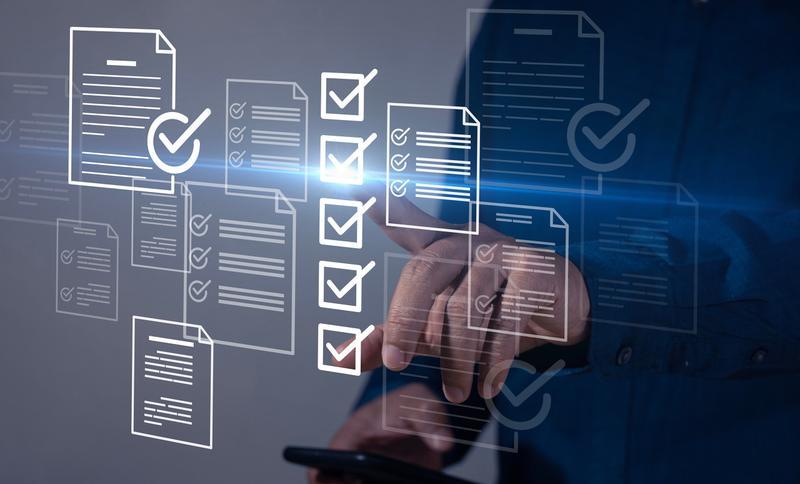
Reactive marketing
Reactive marketing is an unexpected but relevant and humorous campaign, ad, or social media post that responds to the latest events, shows, or news. It helps a brand engage with the audience and gain more impressions and mentions.
In this article, we'll cover the difference between reactive and proactive marketing and review several examples.
Reactive Marketing vs. Proactive Marketing
If you compare the features of these two types of marketing, you'll understand the key difference between them quickly. Let's now review each of them in more detail.
Reactive marketing refers toimpromptu posts, campaigns, or ads related to the latest events. These posts are humorous, engaging, and relevant. This is a great way to hook people and establish a positive image.A brand's team can express the company'soverall opinion through reactive content, start a discussion with customers, and create buzz. As a result, a brand looks morefriendly and close to people. It gains a wider reach and increases the customer base.
Proactive marketing refers to well-planned campaigns, ads, and social media posts. Brands take the issue seriously and prepare campaigns in advance for certain holidays and events. They are planned and expected. Companies release these posts and ads at a certain time.
To sum it up, a proactive marketing campaign needsthorough preparations before the release, whereas a reactive marketing campaign is a spontaneous action that responds to the latest events or news.
You should review some examples first to know when and how to develop an intriguing and humorous campaign. Let's do it to grab some inspiration.
Examples of Reactive Marketing
You can notice many examples of reactive marketing on social media. This is because we now have around 3.78 billion users of popular social networks who constantly explore different accounts.
Ben Jerry's,a famous ice cream company, focuses on a different perspective in its reactive marketing. The brand's reactive content is more informative than humorous. Thebrand doesn'ttake politics as something entertaining or amusing. It tries to raise essential questions, express an opinion on the latest news, support some facts, and start a discussion among its followers.
For example, the brand sharessome thoughts on climate justice in its latest tweet.The company informs, educates, and strives to make a positive impact.
Innocent's funny reactive campaign is another excellent example. The brand used Instagram to make a relevant and humorous post timedwith the Olympic Games Tokyo 2020. It aims to win followers' attention and make them leave comments about their alternative Olympic sports. People like and share the post, and the company gets impressions.
These examples are unique and different. So, we hope that youwill have some ideas for your future engaging reactivation post or campaign after exploring them.

Rebranding
Rebranding happens when a company changes its logo, slogan, vision, mission, values, name, target audience, or market to build a new brand identity in the minds of leads, customers, competitors, and partners. It helps brands attract new audiences, stay relevant, stand out among competitors, and improve brand awareness.
In this video, you’ll find out when to rebrand your business and the steps to successfully implement this strategy.
Why is rebranding important?
According to Forbes, your business has seven seconds to make a first impression. Sometimes brands fail to draw the attention of customers because of using the wrong logo, having a difficult or uncatchy name, or working with an unclear vision and mission.
We live in a world where trends are constantly evolving, so companies also require changes to attract new customers. This is possible with rebranding. You might just need to refresh your business, design a new logo or name after a merger with another company, or define new business objectives, mission, or vision.
So, let's consider several advantages of this process.
Benefits of Rebranding
New Audience
Higher Relevancy
Improved Brand Recognition
Improved Google Ranking
Streamlined Teamwork
Let’s review the benefits you can reap with a successful rebranding strategy.
New Audience
The main advantage of rebranding is the chance to reach a new target audience. If you focus on your company’s mission, vision, values, and communicate them correctly, people will notice it.
Let’s look at Old Spice. They implemented this strategy after discovering that 60% of men’s body washes were purchased by women. The famous brand decided to reach female audiences with their new commercial. Their new campaign received 105 million views on YouTube, drove traffic to the brand’s site, and earned 1.2 billion impressions.
Higher Relevancy
Rebranding allows you to keep your company up-to-date. Regardless of the age of your brand, it should always remain relevant. Companies need to move fast and follow the new trends in marketing to keep pace. As you know, design trends play an important role in how clients perceive your brand and the products you offer. Ensuring that you always stay up-to-date will help you gain customers’ trust and confidence that your brand is the best.
Let’s consider a successful rebranding campaign from Adidas. The company was established in 1949 and used rebranding several times to stay relevant for their customers. To connect with the millennial market, the brand stopped production of the well-known Stan Smith sneakers in 2011 and presented a refreshed version in 2014. By promoting a launch on social media and partnering with retailers and influencers, Adidas managed to capture the hearts of their new audience and boost sales.
Improved Brand Recognition
Humanizing your brand through a genuine story or video during rebranding can make your company stay in the minds of your clients. Research shows that customers are more likely to engage with a company that delivers an experience, matches their views, or evokes specific emotions.
For example, Dos Equis, a Mexican beer manufacturer decided to change its branding story. This company created “The Most Interesting Man in the World” campaign with a clever and powerful story. The commercial was catchy, well thought out, and humorous. As a result, beer sales increased by 22%.
Improved Google Ranking
Considering the fact that SEO ranks second in the highest ROI list after email marketing, investing in your company to build a strong brand is the right decision. If customers engage with your new brand and recognize it, you can be sure that Google will evaluate your efforts. For example, after serious brand building, Neil Patel’s website traffic went from 240,839 to 454,382 users in several months.
Streamlined Teamwork
If your company doesn’t have a clearly defined mission, vision, and strategies, you have a chance to restructure them according to your needs. This structural clarity is critical to improving the efficiency of your business: hire the right employees and make them work accurately, manage company operations, and make the right business decisions.
It is essential to be aware of the pros of a rebranding campaign. Besides, it is important to know in which situations you should consider this risky move.
When do you need rebranding?
Rebranding is a complicated and costly process that carries big risks for big and small companies alike. Therefore, you should have serious reasons to implement this method in your business. Here are the main reasons to consider rebranding:
If there is a market repositioning. Repositioning involves changing a company's existing brand or product status in the marketplace. This process is critical when a company has a weak or outdated image, requires global strategic changes, or needs a new target audience. If you decide to reposition your product to target a completely new market segment through new packaging, size, taste, promotional channels, price, or place, it is advisable to think about rebranding.
When you want to improve your company's reputation. A scandal on social media, low quality of products, or data leaks can result in a tarnished reputation. Of course, it has a negative impact on your company and its customers. Real changes within the company can help eliminate negative associations that arise in the minds of people and win customers’ trust again.
If a company merger takes place. If two companies link forces and become one, you have a merger. To showcase the best qualities of each business, gain customers’ trust, develop brand awareness, and avoid confusion, a refresh is necessary. A merger allows your company to enter new markets, use financial resources efficiently, obtain more profit, new management, and more. This process also influences consumers as it results in better customer service, higher quality products, and lower prices.
When you want to go international. When a business enters international markets, it often resorts to rebranding to achieve distinctive growth and financial gains. To connect with new locations, companies come up with a new company name and a logo that identifies your brand is unique, easy to remember, and can be understood in other countries.
If there is a change in leadership. Companies are linked to their leaders. If a brand changes hands to an outside owner, a new identity is a way to emphasize the transition.
Remember not to make changes just because you’re bored with your logo or slogan, or you’re looking for attention because your brand awareness efforts didn’t meet all your expectations. You are misleading yourself if you think that a branding change is the fastest and easiest way to improve your business.
To successfully implement this strategy, you need to study the types of rebranding that are available and choose the one that suits you the most.
Types of Rebranding
Partial Rebranding
Total Rebrand
Before getting started, you need to determine which type of rebranding strategy you need.
Partial Rebranding
This strategy is used when you decide to add something new to your current brand without totally changing it. A refresh is necessary when your company’s logo and image have become outdated or there has been a slight shift in your business objectives.
Here you can see the Apple logo’s refreshes from 1976 to 2013.
Total Rebrand
This option is used when your company has had a foundational shift like mergers, a change in leadership, product overhauls, etc. As a result, your brand needs to undergo a change in brand identity along with your brand mission, vision, and values. Here comes a complete makeover.
The gaming hardware manufacturer, Oculus, was acquired by Facebook in 2017. Shortly after the acquisition, Facebook did some rebranding, and critics of the merger feel that the changes to the logo were just the beginning for Facebook’s total rebranding of Oculus.
Now that you know the main types of rebranding, let’s consider the steps to get started.
How to rebrand a company
Redefine your target audience and market
Rethink your vision, mission, and values
Reconsider your company name
Revise your brand slogan
Re-establish your brand identity
Once you’ve decided whether you need a partial or a total rebranding strategy, take a closer look at the following steps to implement this strategy in your business.
1. Redefine your target audience and market
Conduct research to understand your target audience, what your competitors are doing, what is unique about your brand, and how it differs from other companies in the same industry.
In-depth research that involves focus groups and data analysis, allows you to notice if your customers and competitors don’t match your idea. Identify your actual buyers and their preferences. Compare this data with your initial target market and audience to find out some differences. As soon as you manage to define your actual market and audience, you can go on implementing your strategy.
2. Rethink your vision, mission, and values
Every company has three main elements that you need to evaluate: mission, vision, and values. Analyze each of them to understand what is going wrong.
Vision. Vision gives your brand direction and defines the actions your company needs to take. Over time, the vision of your business might change, and that is totally normal. However, it is essential to redefine your vision as soon as this happens to ensure that your employees are moving in the right direction and make decisions accordingly.
Mission. This defines the purpose of your company. Your mission describes your primary consumers, the products you produce, and your location. It is your business’ roadmap. As your mission changes, your messaging requires change too.
Values. Your company’s values explain why you're working towards your vision, and why you’re committed to your mission. As brands evolve, they might change their old values. So you need to reflect your new values to show your main focus.
Remember, if the components mentioned above change, the way you communicate them to your audience also requires some change. The language you use, the tone, and voice have to match the message you want to convey.
3. Reconsider your company name
Of course, changing a company’s name is a serious step as it can cost you brand recognition and organic traffic. However, if you are seriously thinking about changing your brand’s name, make sure that you have a plan of recovery after you rebrand.
In general, if your company name still aligns with your mission, vision, and values, it is better to keep it. Yet if it mismatches your identity, it is advisable to modify it. Make sure that your new brand name conveys your message, is easy-to-spell and catchy. The right name also supports your goals and business growth.
4. Revise your brand slogan
Your aim here is to create a slogan that communicates your company mission, vision, and is also memorable. Consider changing it carefully as it highlights the purpose of your brand.
For sure, customers remember catchy slogans from famous brands like “Just do it” from Nike, “I'm Lovin’ It” from McDonald's, or “Because You’re Worth It” from L’Oreal. To create a great slogan, consider providing instructions, making a claim, getting metaphorical, or using poetic language.
To help you create a great slogan for your brand, here are several simple tips:
keep it short, simple, and clear;
use your unique value proposition;
be consistent;
ensure that it can stand the test of time;
consider your target audience and market.
5. Re-establish your brand identity
There are several things you might consider changing about your company’s brand identity like your logo, shapes, imagery, colors, or guidelines. Here are several changes you need.
Change your logo
If you have had some internal changes in your company and you want to demonstrate them, consider developing a new logo. To refresh your old logo, use these basics to do it correctly:
demonstrate your confidence by creating a simple logo;
create a logo that will stand out;
use universal shapes and styles that fit your communication channels;
ensure that your new logo supports your mission, vision, and values in the long run;
try to use parts of your old logo to help customers recognize your brand.
Use different colors
According to the Maryland study, color raises brand recognition by 80%. So, color influences your customers and your brand.
Look at your company colors with fresh eyes to decide whether it matches your brand image. Besides, nowadays it is essential to check how your color palette looks on-screen and in-print. Make sure it looks the same on different brand materials.
Reconsider your shapes and imagery
Once you decide to change any visual elements of your branding, give a thought to modifying shapes and imagery to keep everything cohesive. Also, make sure that your imagery and shapes support your brand’s message.
Rebranding Examples
Dunkin' Donuts
Airbnb
Starbucks
Dropbox
Burberry
Co-Op
Coty Inc.
Companies are taking a risk when rebranding. However, if implemented correctly, it can help your business grow.
Dunkin' Donuts
2019 is marked as the year when Dunkin' Donuts considered a redesign. The brand came up with a new logo that dropped the word "Donuts".
According to the company's Chief Marketing Officer, they refreshed their logo to reflect the increasing emphasis on coffee, other drinks, and sandwiches. Nevertheless, the brand still uses the same color palette and iconic font to maintain brand awareness among customers.
Airbnb
This famous worldwide company established in 2008 implemented a total redesign that worked. The company's management decided to radically change the perception of the brand. They used different color palettes, typography, and a new logo. Airbnb received many negative comments on social media but finally, the audience accepted the company's step. As a result, Airbnb has a contemporary and engaging identity.
Starbucks
This multinational chain of coffeehouses and roasteries has changed its logo several times since it was founded in 1971. Let’s consider Starbucks' latest rebranding conducted in 2011.To celebrate their 40th anniversary, the Starbucks team decided to introduce a new logo. They dropped the lettering from the logo and gave space for the image of the mermaid and introduced a new identity to their consumers.
Dropbox
Dropbox was established in 2007 as a file-hosting service, however, in 2017 the company started to position itself as the connective tissue for different teams and businesses. The brand also changed its internal mission and created a cleaner and simpler logo. With a refresh, the team wanted to highlight that Dropbox is a workspace that enables teams and ideas to connect.
Burberry
Burberry, a luxury fashion house established in 1856, needed a makeover when its CEO changed in 2006. Since then the company started telling its story of moving forward to showcase the best aspects of the brand. Burberry aimed at engaging customers digitally via social media channels. The brand redesigned its story and made a strong emphasis on its “Britishness” by employing British models.
Co-Op
The organization founded back in 1844 is a consumer co-operative with a diverse family of retail businesses. The company’s decision to rebrand was caused by a series of events that undermined the Co-Op’s reputation. In 2013, the public found out that there was a 1.5 billion pound hole in the bank’s accounts.
The company needed to improve the group’s tarnished image to prevent a collapse. Co-op changed its leadership and restructured business. They decided to adopt a recognizable visual identity for their customers. Additionally, the organization offered a 5% reward on the brand's products.
Coty Inc.
A rebrand gave a new life to Coty, a beauty company that has been in business for more than 100 years. After a refresh, the brand presented its new visual identity, values, and purpose to its target audience. The company switched its identity to joyful, colorful, and multifaceted to showcase the diversity of beauty. They instantly created newly branded interiors and delivered personalized brand communications to their customers.
Whether your brand needs a refresh or a total makeover, rebranding is instrumental in creating the right perception. It allows you to create a brand new visual identity for your business to achieve several goals, like: reaching new customers, improving brand awareness, boosting your Google ranking, and more.

Reputation management
Reputation management is controlling and influencing the audience's perception of the brand through responding to customer feedback. Companies use social media monitoring tactics and reports from a customer care team to analyze reputation. They manage reputation through social media, emails and chatbots.
Let’s find out why companies can’t ignore customer feedback.
The Importance of Reputation Management
Maintaining a good business reputation is key in the world crowded with so many brands and solutions. Reputation is fragile and easy to damage since there are many places for leaving feedback. Customers are usually less eager to leave a review when they are satisfied with the product. Once they had a negative experience, many customers rush to share it with people on social media, in comments, and forums. Such pieces of feedback are extremely harmful for brands because prospective customers research before making a purchase and finding a lot of 1-3 star reviews will stop them from becoming a customer.
Having a good reputation is crucial for any eCommerce businesses that sell products on Amazon, eBay, AliExpress and other marketplaces, as well as for any shops, restaurants, real estate agencies and governmental organizations that appear in Google search. When people search for “vegan restaurant near me,” they usually check the review which appears in the right-hand corner of the results page. If it shows less than 4 stars and negative feedback is written in the comments section, people will most likely prefer to eat elsewhere.
It’s best for companies to deal with all this negativity to maintain a positive balance in their reputation. Reputation management is what they need here, so let’s find out how it works.
How does reputation management work?
Reputation management process has three stages:
Feedback detection.
Developing a strategy.
Dealing with negativity.
Let’s analyze each stage.
Feedback detection
First of all, you need to detect harmful feedback online. On eCommerce platforms like Amazon and eBay you can check it in real-time in your feedback section. You can also monitor reviews in Google search and, if you run an online shop, ask your customer support manager for a regular customer feedback report.
Since the best part of online communication happens on social media, it’s best to analyze what people say about your brand there, too. Marketers use social media monitoring tools which help them detect any brand mentions on specific social media platforms, with or without hashtags.
Developing a strategy
Gather user feedback in reports based on platforms and patterns: perhaps most of the negativity comes from one low-quality product, one manager, or shop; perhaps there is a repeating issue, like a delay of the order delivery. Having all feedback in one place will make it easier for you to detect those patterns and deal with them.
Based on insights you’ve gained from these reports, decide how to deal with negative feedback, prioritize tasks, and assign a manager for this work. The better you organize your resources, the more effective your reputation management will be.
Dealing with negativity
There are many ways to deal with negative customer feedback online. The simplest one and probably the best one is to address people’s issues from a brand account as soon as possible, once you’ve detected their negative review or post on social media. Analyze each problem, say you’re sorry, and offer ways to solve the issue so that the customer is satisfied in the end.
There are also several less popular ways to manage business reputation:
submit press releases to authoritative online websites to suppress negative content;
submit a legal takedown request if someone tries to harm your business by posting misleading information about your brand;
get positive feedback from public figures and social media influencers relevant to your niche;
offer free products to YouTube and Instagram reviewers to increase chances for positive feedback;
proactively respond to public criticism around recent changes in your pricing policy.
Less transparent ways to manage business reputation, such as comments removal and creating anonymous accounts that make positive reviews raise ethical questions. If the laws don’t strictly regulate reputation management, it’s up to the company to decide whether to use some of these tactics or not.
Let’s find out what it takes to create your own reputation management strategy.
How to build a reputation management strategy
There are 6 steps to create your reputation management strategy.
Detect where people comment and mention your brand. These touchpoints are social media platforms where your brand is present — professional forums, comment sections on your blog, Trustpilot reviews, reviews in Google local queries, etc.
Choose monitoring tools. Among the most popular tools for social media and online monitoring are Sprout Social and Hootsuite. They aggregate user feedback with or without hashtag mentions into real-time reports, so you can deal with it more conveniently. You can also check feedback at your own online shop or marketplace, where you sell products.
Decide how to react to certain feedback. Think of the tone of the message as well as the words that best fit a certain situation and negative mood of an unsatisfied customer. It’s best to create very specific templates so that you can swiftly respond with the best answer.
Prioritize tasks. Decide which platforms are more important for your business reputation and create a queue according to which you will work with feedback on a daily or weekly basis.
Assign a responsible manager. If there is plenty of feedback across different platforms, it’s best to assign a part-time or full-time manager for this role.
Prevent negativity. Make sure you do everything you can to foresee and prevent negative feedback because it’s the easiest and cheapest way to maintain a good business reputation. Double-check delivery deadlines, develop a fair return policy, abide by the rules of the country you work in, and make sure to follow best practices of eCommerce marketing.
Congratulations, you’ve learned what reputation management is, why it’s so important for business, and how it works.

Real-time marketing
Real-time marketing is focusing on events, customer feedback, and trends on social media channels to create relevant interactions with the target audience in real-time. Marketers listen to customer needs through various listening tools to address them on time. It helps connect with prospects and customers, convey the brand’s position, and drive conversions.
In this article, we’ll uncover why real-time marketing is important and offer you to explore some strategies. We’ll also provide you with some amazing examples of real-time marketing.
Why is real-time marketing important?
Companies able to connect with their target audience in real-time have advantages over those who only act based on a marketing plan. To connect with leads and educate them about a product, brands should be ready to interact with their potential customers in real time when they need recommendations, assistance, and help. Marketers use social media channels and listening tools to identify customer needs and address them quickly. People who receive instant help in direct messages, comments, or recommendations appreciate brands and show trust.
With real-time marketing, you’ll be able to create relevant messaging and appropriate communication with your target audience that meets their needs, wants, and desires. You’ll provide relevant and timely solutions to prospects’ problems. Active social media presence allows companies to communicate with the audience and convey their brand position. It encourages brand awareness and builds relationships with customers, and trust. By planning your response to an ongoing event or trend, you’ll have the chance to become more appealing to your customers because you understand their pressing issues.
Real-time marketing campaigns allow businesses to be relevant and respond to the latest news and things in the world. With their help, brands pay attention to people’s words and needs and address their problems in real-time.
Now that you know why real-time marketing is important, it’s time to reveal some great strategies to consider in your real-time marketing plan.
Real-Time Marketing Strategies
Using the strategies helps you make your steps more planned and efficient. We’ve prepared a list of things you should do to succeed in your real-time marketing. So let’s explore them.
Use listening tools. To keep up with the trends, you need to set up Google alerts. You should be aware of the most relevant topics to come up with fresh and valuable materials for your audience. Scan your industry in Google alerts to see what’s trending. Track the events of your competitors and their strategies. Find out what differentiates them from others so that people appreciate their work. Team up with influencers because they can help you disseminate information about your brand and become your brand advocates.
Hire a brand ambassador. Since trends can change quickly, you need to adapt and communicate the message fast. Let people know about your initiative from a public person. Besides conveying information to your audience, a brand ambassador develops awareness for your product, communicates with potential customers, and finds the best ways to present your brand. Your company will earn trust and build credibility.
Understand your customer’s preferences. Before offering your product, explore your target audience’s needs, communication channels, problems, and desires. It will help you connect with the right people at the right moment. Understand your buyer journey online to avoid annoying customers because of the irrelevant offering. Identify the right channels to contact prospects to make them feel convenient.
Now that you know the strategies, let’s walk you through the examples. They will help you figure out how you should act when implementing real-time marketing.
Examples of Real-Time Marketing
We’ve prepared the best examples for you to find out how real-time marketing works. These examples will show how you can earn customers’ trust and loyalty. Hope that these brands will inspire you to choose and develop a strategy for your business.
Taco Bell
Taco Bell demonstrates its eagerness to communicate with customers every day on social media. The well-known American fast-food company crafted amazing brand messaging for its real-time marketing campaign on Twitter. The brand’s team is active online and responds to users’ messages on Twitter twice an hour daily. Taco Bell’s marketers are always happy to interact with consumers every day and reply to their comments.
The Ice Bucket Challenge
Everyone still remembers the ice bucket challenge in 2014 that created buzz and showed a high level of engagement. The challenge is an excellent example of a successful real-time marketing campaign. Many brands and opinion leaders participated in the viral challenge in 2014. A person had to pour a bucket of ice water over his head and challenge six other people to do the same or donate $100 to an ALS charity. The event was held to promote awareness of amyotrophic lateral sclerosis and raise money for ALS foundations.
Congrats, now you know about the importance of real-time marketing and the benefits your company can reap after implementing it. Grab some inspiration from the examples and start interacting with your prospective customers and clients in real-time.

Recipient
In email marketing, a recipient is a person who gives his or her permission to send them emails that may contain advertising materials, offers, company digests, invitations to events, video reviews, and other content.
What methods do marketers use to collect a recipient base?
Website visitors
We recommend placing asubscription formon the main page of your website. Create a large button with a clear call to action, such as "Sign up for our newsletter."
A separate landing page for subscription
In this way, you can share your landing page for email subscriptions via social networks to grow your email list of recipients.
Ask your clients for permission to email them
These contacts are essential for you because people who once made a purchase in your store probably had a good user experience while making the previous purchase. That's why they trust you and may give you their email addresses to receive new offers.
Special unique content
Announce that you'll send exclusive, useful content in exchange for filling out a subscription form. It may be e-books, research, webinars, videos, etc.
Webinars
Organize special online events such as webinars and quizzes to get more recipients.
Exhibitions and events
Grow your email list of recipients with the help of offline activities such as meetings, conferences, exhibitions, and tradeshows. Do not forget to send recipients a welcome emailto remind them where you got his or her email address. Ask recipients to confirm their subscription to avoid spamcomplaints.

Regular campaign
A regular campaign means an HTML campaign with images, links, and complete text formatting, which also contains the plain-text version.
Regular campaigns are the most common type among all campaigns.
It is not obligatory to supplement an HTML campaign with a plain text version of it; however, it is good practice in terms of email deliverability. There are several explanations for this:
Spamfilters prefer to see the alternative plain-text version of the HTML email to let it through to people’s inboxes. This function of spam filters can be easily explained by the fact that spammers usually do not take the time to create plain-text versions. If you take the time to do it, you will be rewarded with more successful automated campaigns.
Some email clients or applications do not support the HTML format. This can result in the non-deliverability of your emails to such subscribers. Having a plain-text backup version will ensure that the subscriberswill see your email. There will be no images or rich formatting, but the main point of it – the information and URLs – are going to be preserved.
If you do not include the plain-text alternative, for the abovementioned reasons your subscribers are likely to see this:

Quality Score
Quality Score is a measure used by Google, Bing, and Yahoo! to access your ad quality in terms of matching the user's search intent. This is a score of 1 to 10, with 10 being the highest value. 3 components influence the Quality Score and cost per click.
In this article, you'll get to know why a Quality Score is important and the way it predetermines your CPC. We'll uncover 3 components of a Quality Score and share some tips to improve this measure.
Why is Quality Score important?
First and foremost, Quality Score is not a KPI but a diagnostic tool, as Google states. It helps you understand how users interact with the same keywords as yours. Your score identifies the relevancy of your ad compared to your competitors. The highest the score, the more useful is your ad or landing page to your target audience. Quality Score is assigned based on the ads analysis of other advertisers using the same keyword during the last 90 days.
Although Google Quality Score is not considered in the ad auction, it provides advertisers with several benefits. Firstly, this measure allows you to save your advertising budget. The higher your Quality Score, the less your will have to pay for your ad placement. Let's see how it works.
Google earns money on advertising, consequently, the search engine is paid only when users click the ads. To make them click through, ads should be relevant to their needs. If the advertising space was clogged in with irrelevant ads, users wouldn't click the links, and Google wouldn't make a profit. In the long run, this can lead to frustration and distrust of the search engine. This is why Google is interested in providing people with the best user experience.
Secondly, since the high Quality Score helps you save money, your cost per conversion lowers as well. As a result, you earn more money providing users with the relevant offers. Besides, along the way, you'll spend less on acquiring new customers.
Thirdly, the higher your Quality Score, the higher position your ad will occupy on the search engine results page (SERP). As a result, your CTR will boost as well. Before Google AdWords adopted the Quality Score, CTR was the main factor of ad relevancy.
Now that you're familiar with the benefits of high Quality Score, it's time to uncover its main components.
3 Components of Quality Score
There are 3 main components that influence your Quality Score. Сheck them out below.
Expected CTR. This measure shows the likelihood that users will click your ad when shown.
Ad relevance. This measure shows how well your ad matches the user's search intent.
Landing page experience. This measure shows the relevancy of your landing page to users who clicked through your ad.
Besides these primary factors, there's a list of others that somehow affect your Quality Score. They include the following ones:
user location;
geographic performance of your ads;
devices used;
time of day;
ad extensions.
In addition, Google takes into account any data aggregated from different crawlers to get a full picture of your ad quality. This information will never go outside of Google.
Now you might be interested in how to get to know your Quality Score. Stay tuned!
How to find your Quality Score?
To check your Quality Score, follow the instructions below.
Go to your Google Ads account.
Navigate to “Keywords”, select “Search Keywords”, and click the icon of Columns to customize them. To get the report, tick any components that you're interested in, for example, “Quality Score”, “Landing page exp”, “Ex CTR”, “Ad relevance”.
You will get this kind of report. Each component has its status: “Below average”, “Average”, “Above average”. If some statuses are average or below average, your ad needs improvements. You can get the hint by hovering over the status field.
You can also check historical values by choosing the corresponding metrics: Quality Score(hist.), Landing page exp. (hist.), Exp. CTR (hist.), Ad relevance (hist.). You will see your past reports for the necessary data ranges.
Segment by day to see daily changes. For this purpose, navigate to “Segment”, select “Time”, and click “Day”.
Now that you know what influences your ad quality score, it’s time to learn some tips to improve the measure.
How to improve your Google Quality Score?
Since ad CTR, relevance, and landing page experience contribute the most to your Quality Score, you should focus on improving these components. Follow the best practices below.
Develop a granular structure of ad groups. To make users click your ad, it should match their intent. The more ad groups you create, the better their keywords will match the ads within one group. For example, if you sell clothing, avoid combining keywords with a different intent in one group. Users may want to order delivery, check your contact information, look for particular items, or visit a physical store. For each case, you should create a different ad group with different keywords.
Write a relevant ad copy. Your task is to make your ad provide users with the solution they need. For this purpose, you can include your best keyword in the headline, URL, and ad text. This will signal both users and search engine robots that your offer is relevant to users’ needs. At the same time, make sure that your ad looks natural.
Optimize your landing page. Firstly, choose the landing page most relevant to your ad and avoid directing users to your homepage. Make sure that this page provides the exact solution. For example, if your ad targets people who want to pick up the product, don’t provide a link to a page where they can order delivery. Secondly, make the user experience your top priority. Check if the landing page loads fast and whether it’s easy to interact with it from both a laptop and mobile.
Make use of negative keywords. Each business knows about the keywords that look relevant but can confuse the users while searching. To save your advertising budget and target more precisely, create a list of negative keywords. It has no direct impact on your Quality Score but helps avoid lowering your CTR.
Include ad extensions. They not only grab attention because occupy much space in the SERP but provide users with more useful information about your business. Ad extensions include callouts, sitelinks, call extensions, message extensions, structured snippets, rating, etc. They help blow up your CTR and provide users with a lot of data about your brand through an ad.
Congrats, now you know why a Quality Score is important and have some tips to increase this measure. Track your past quality scores regularly to improve the performance of your ads!




